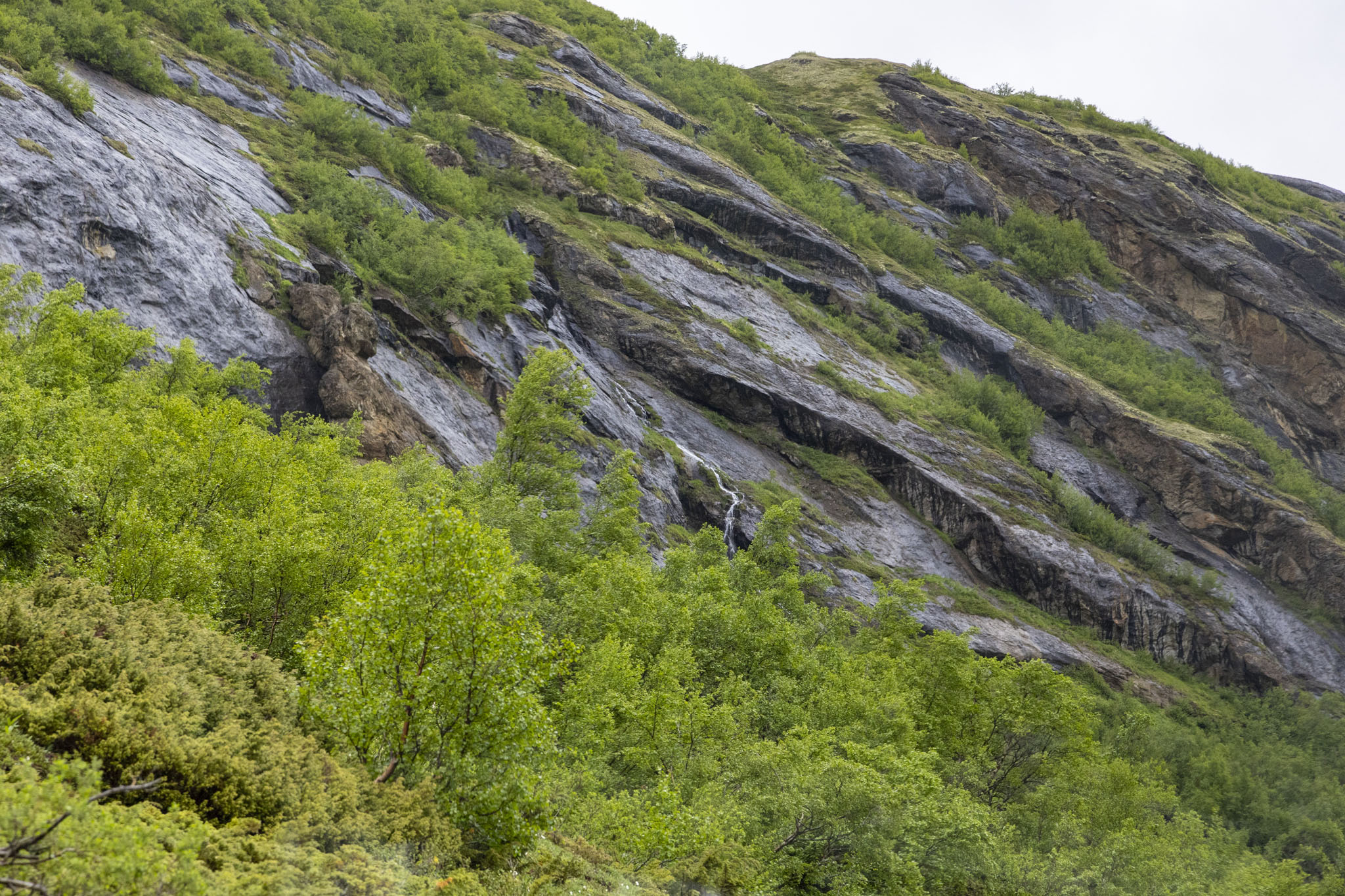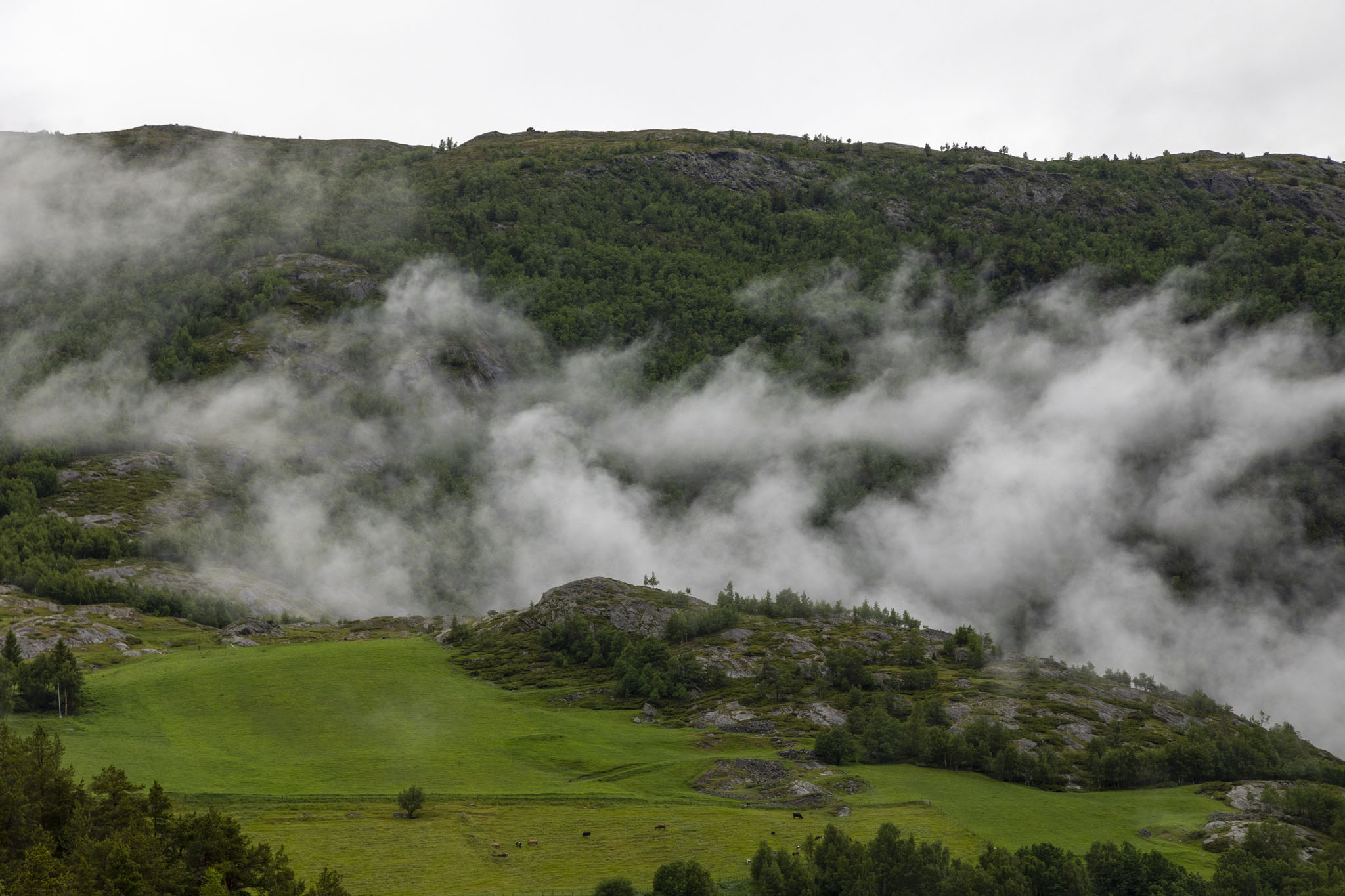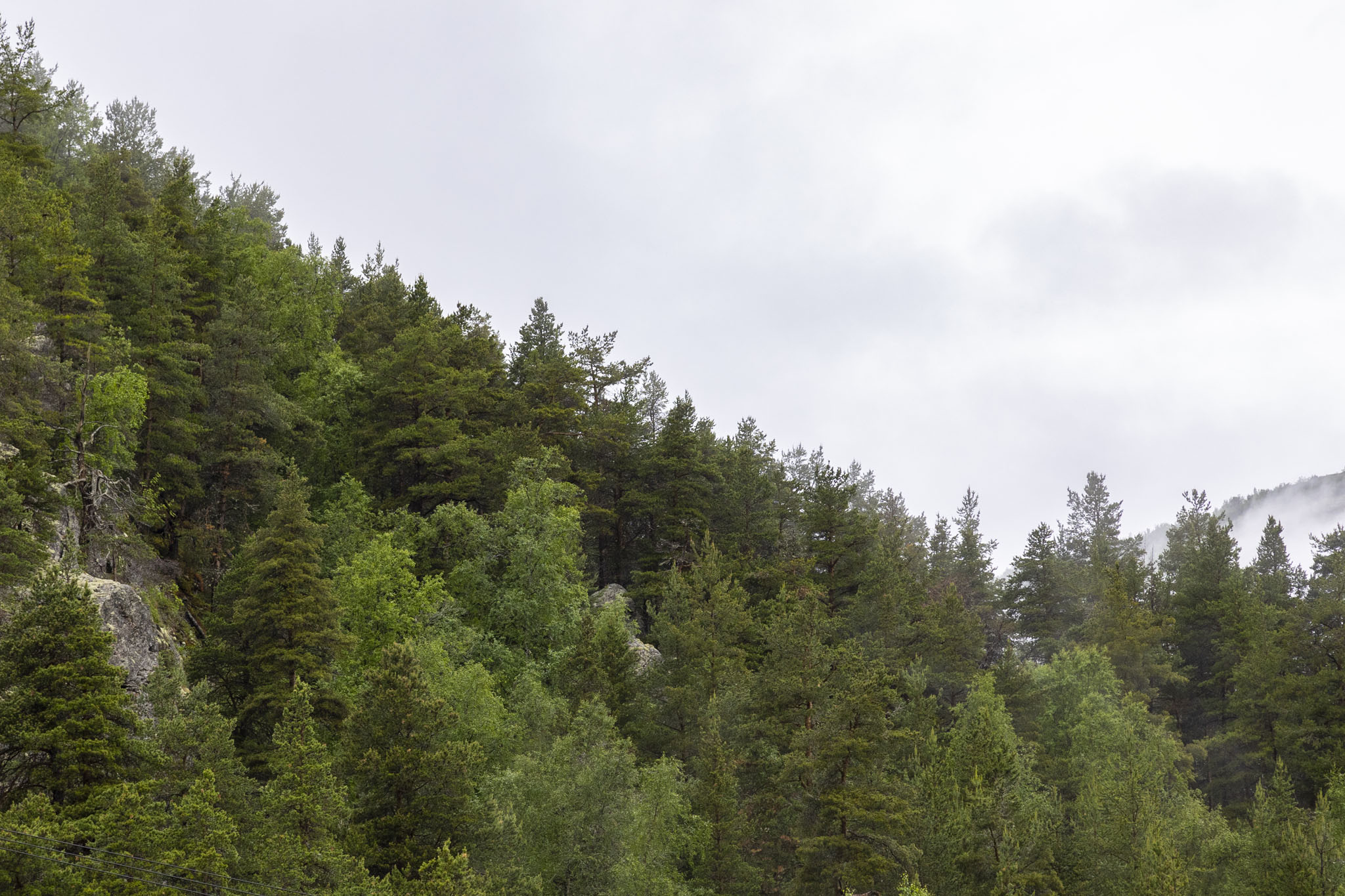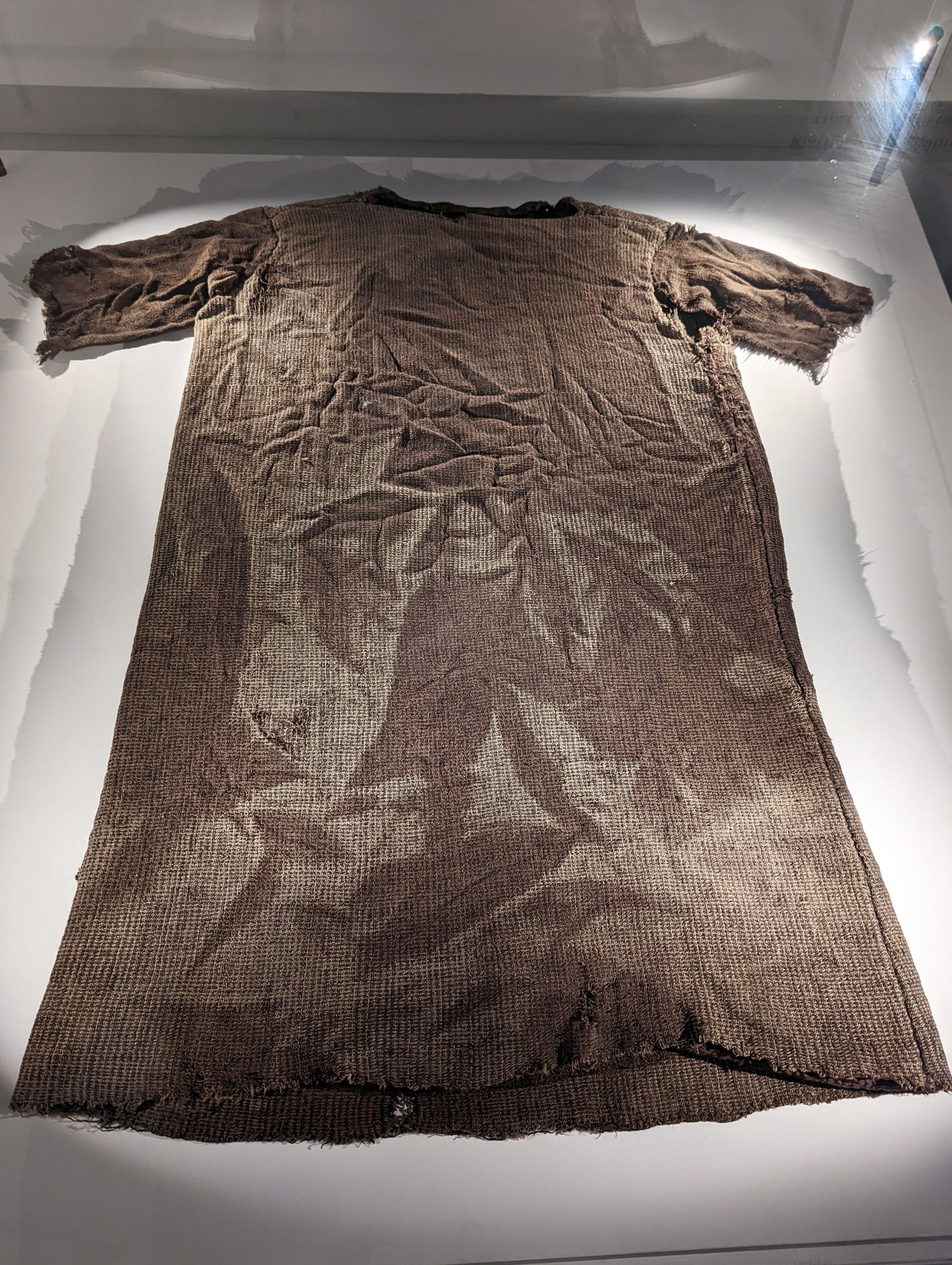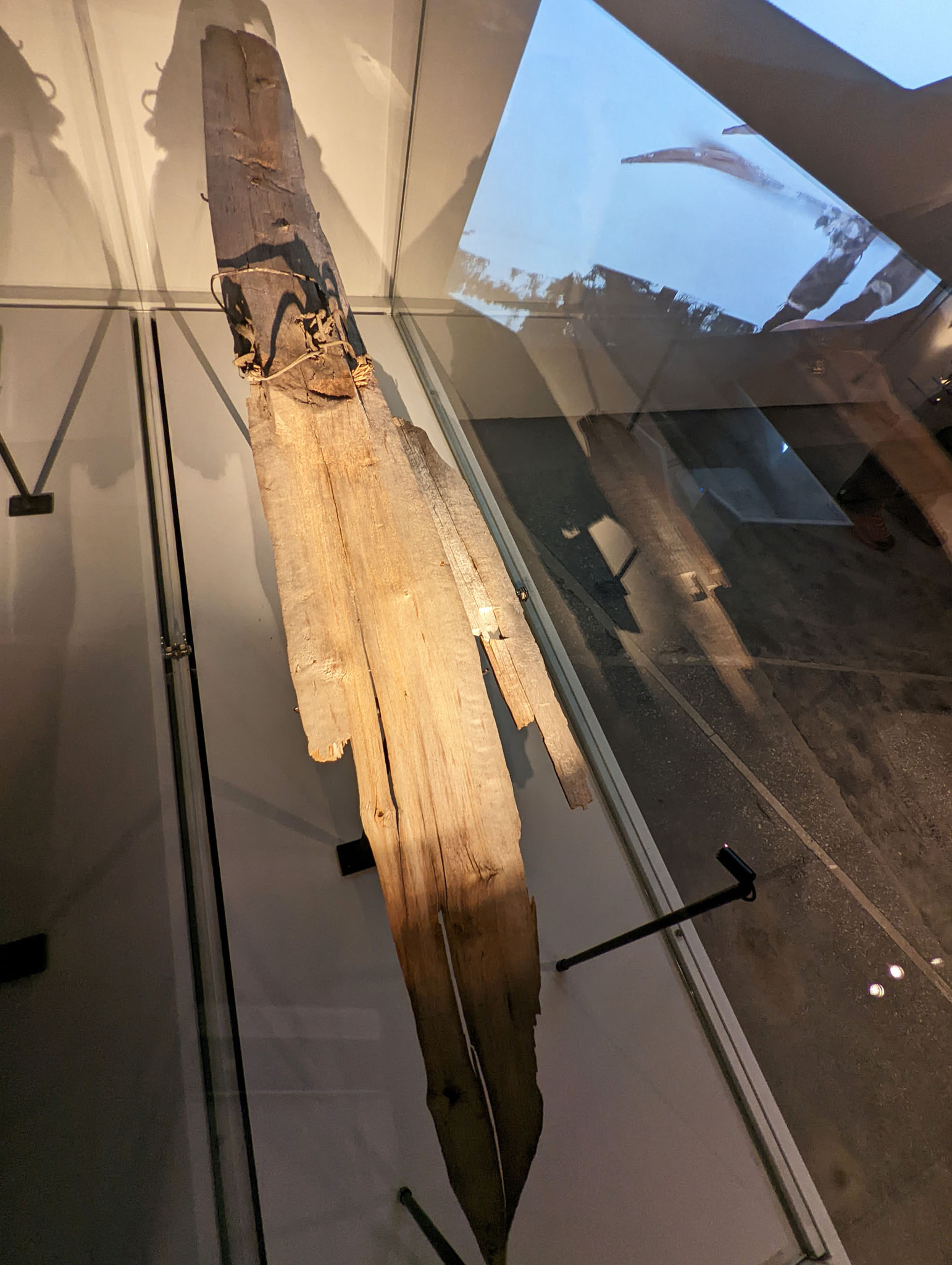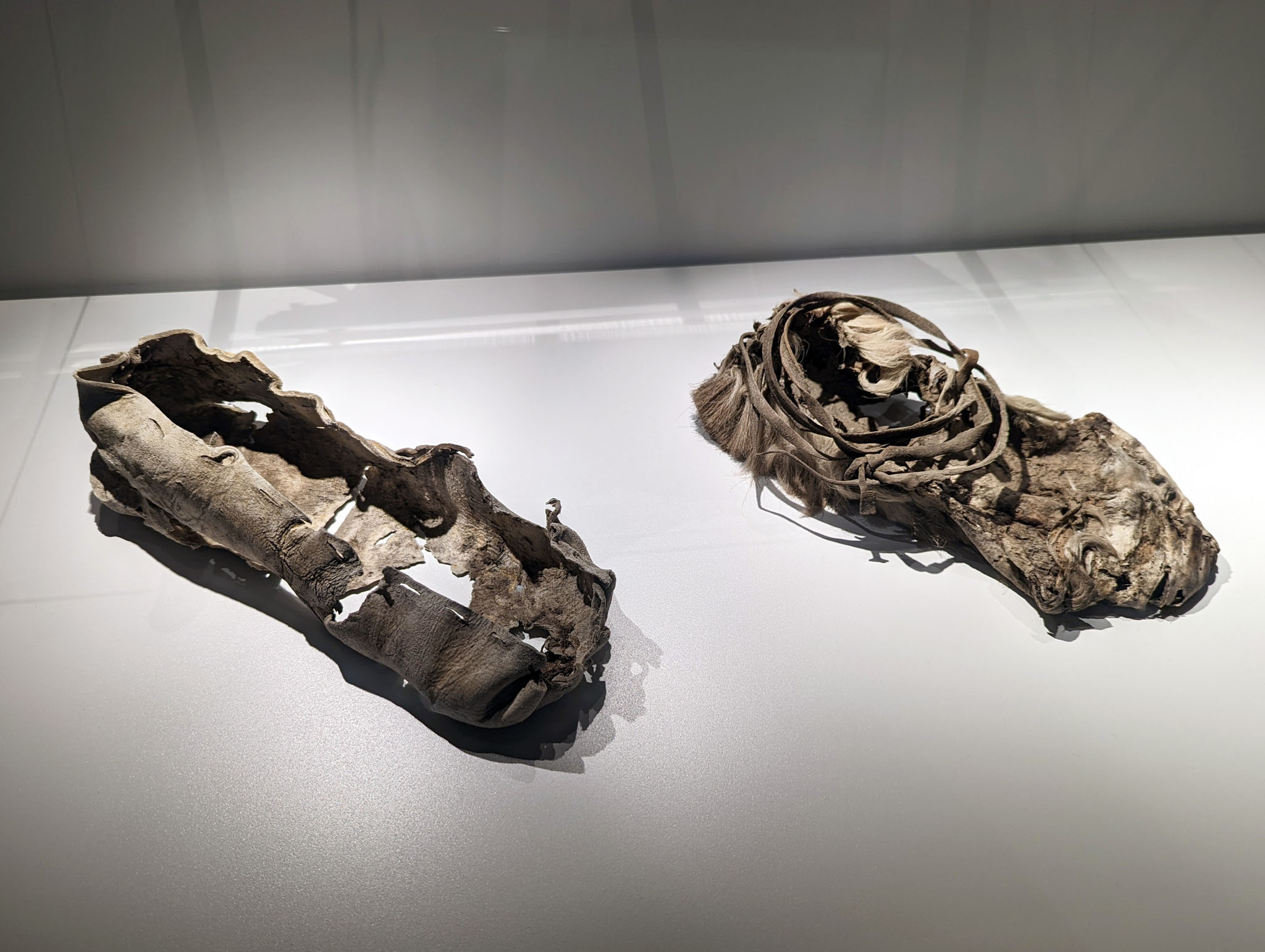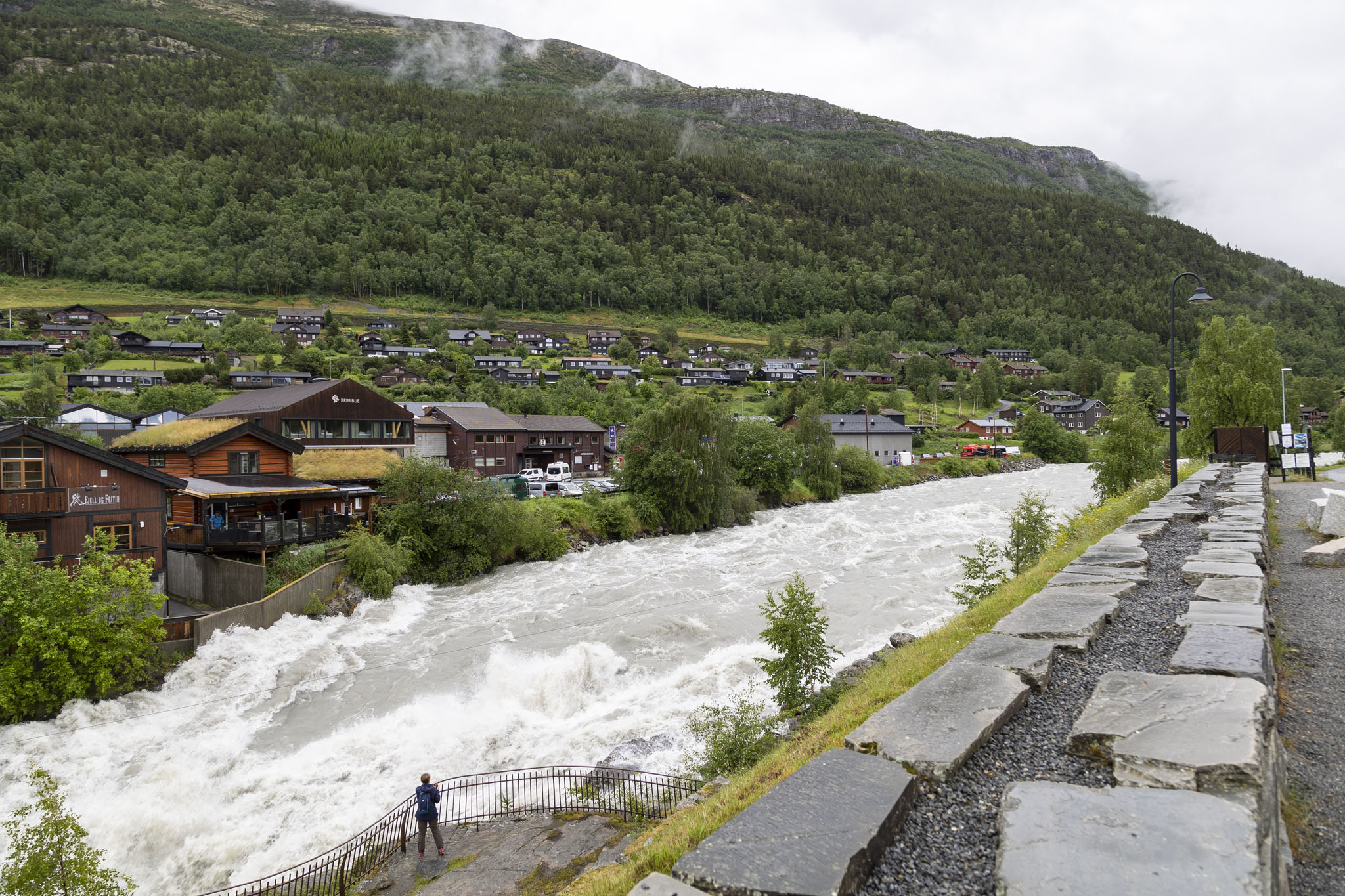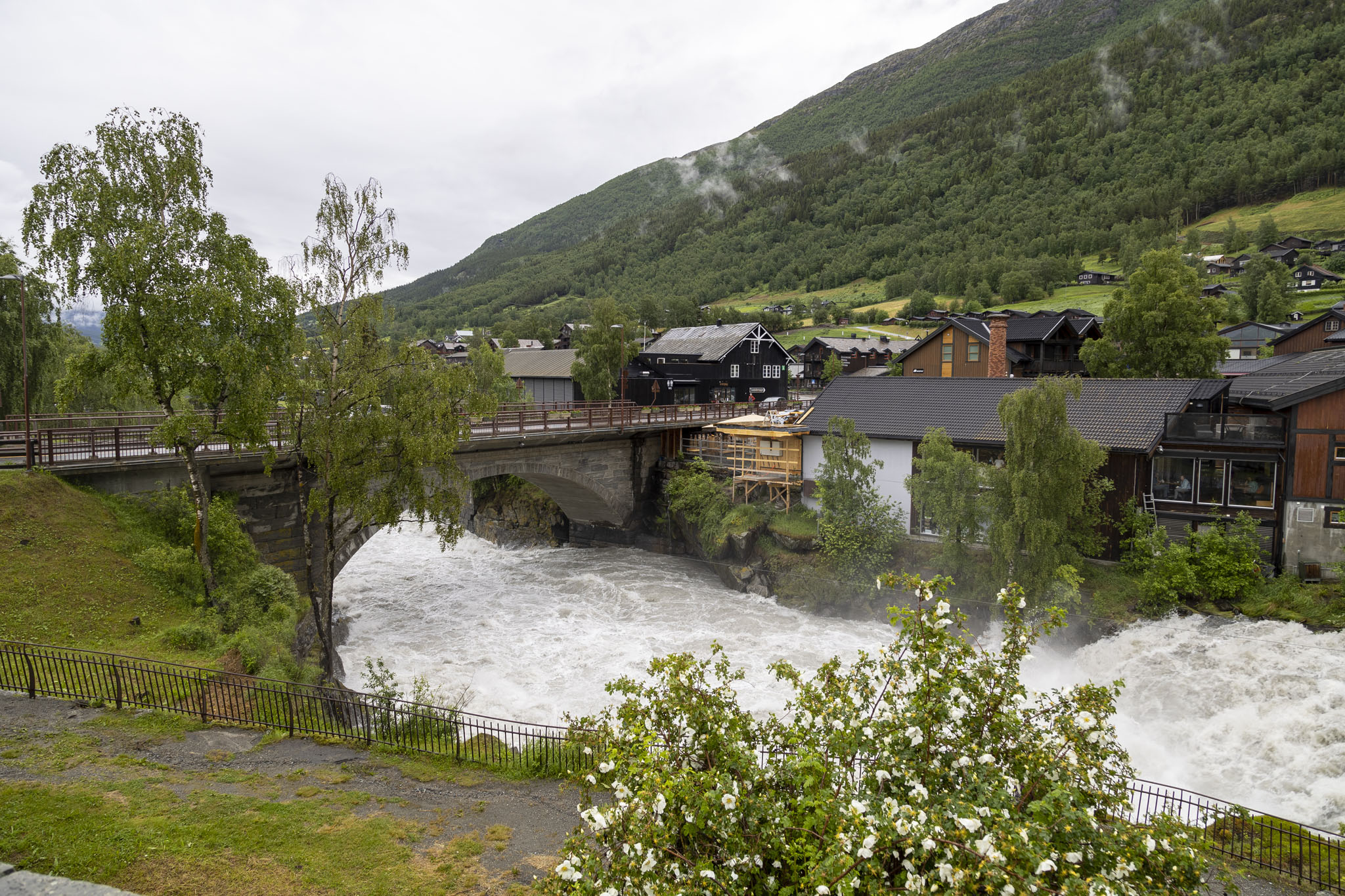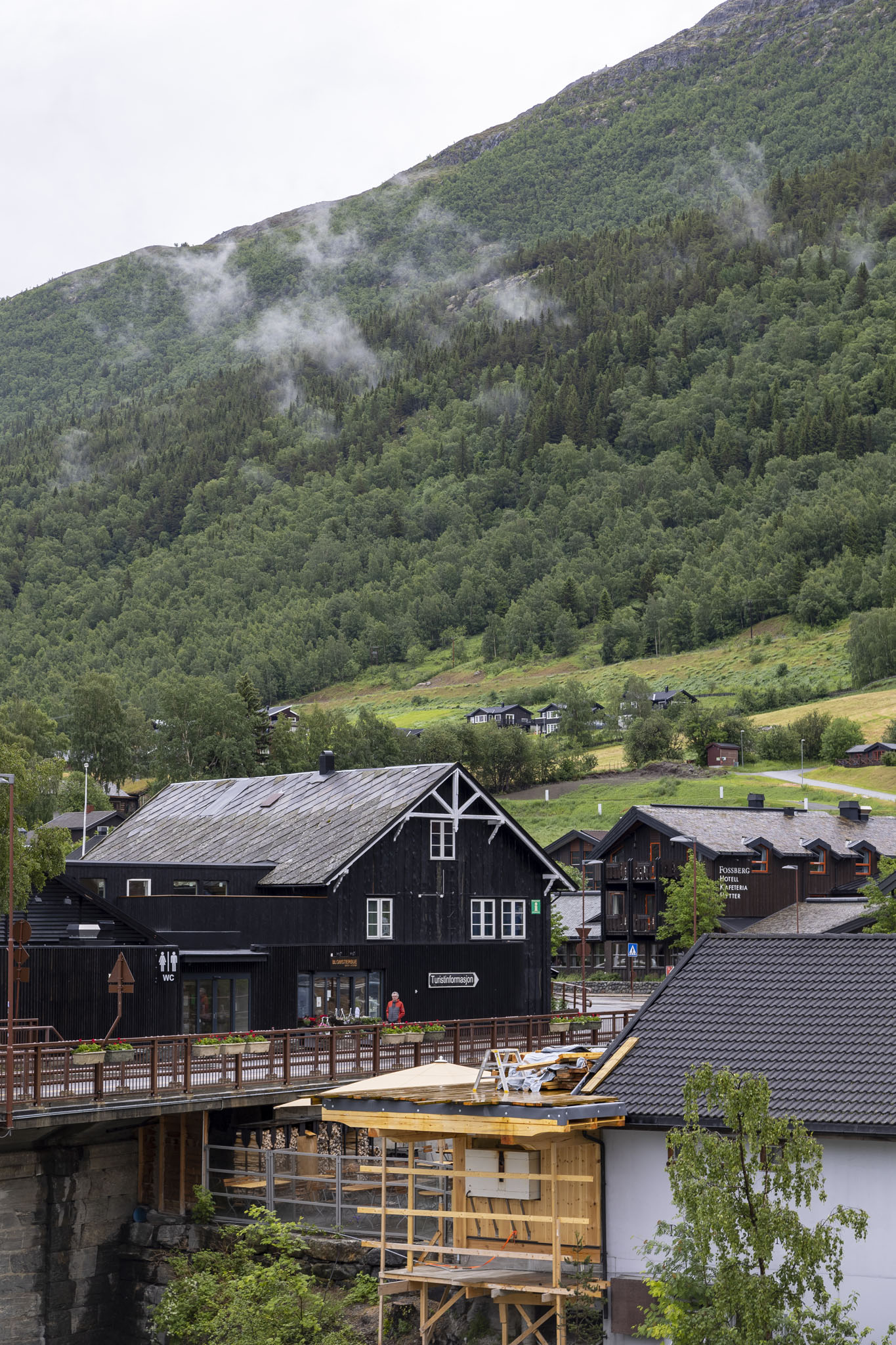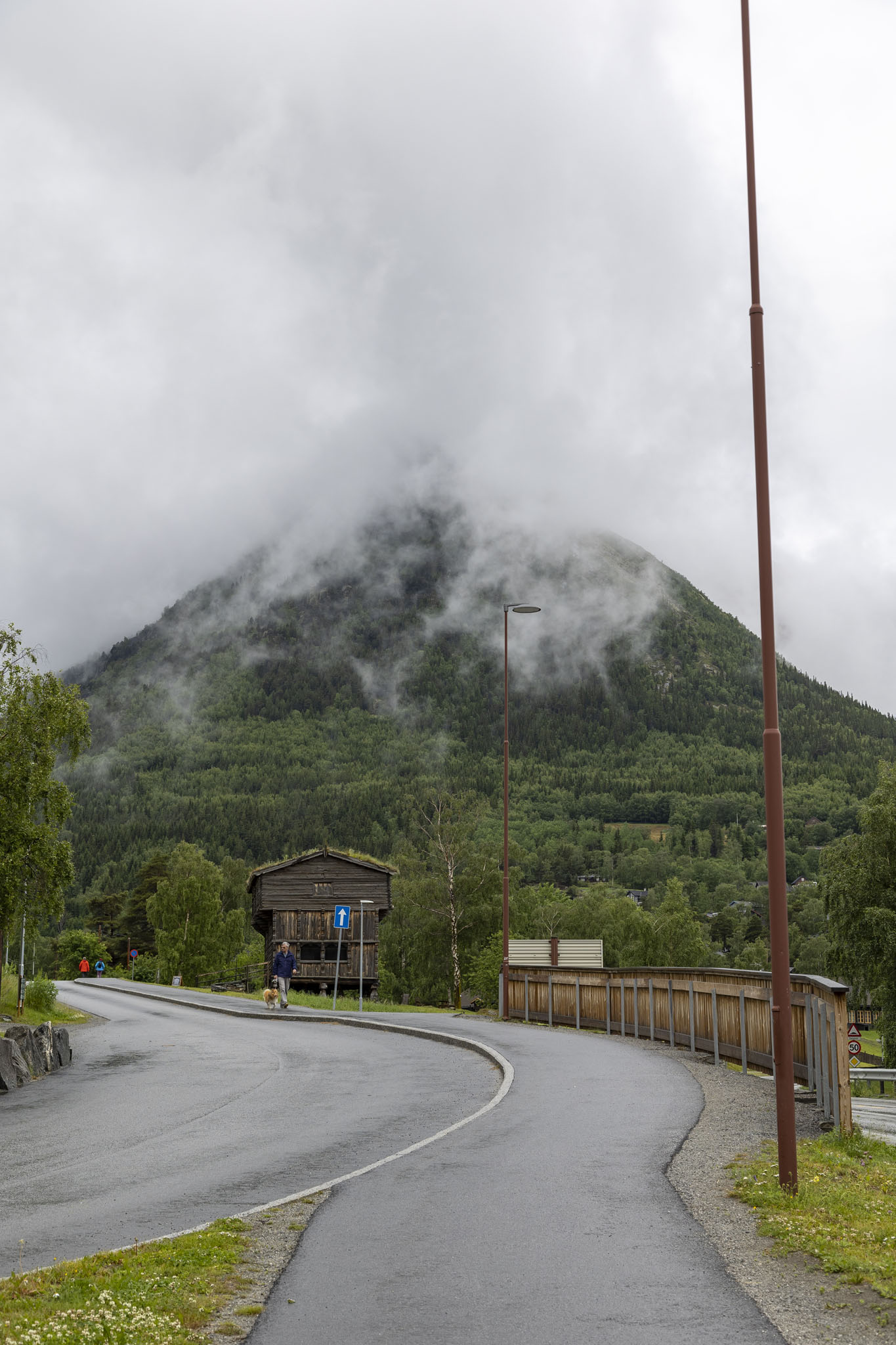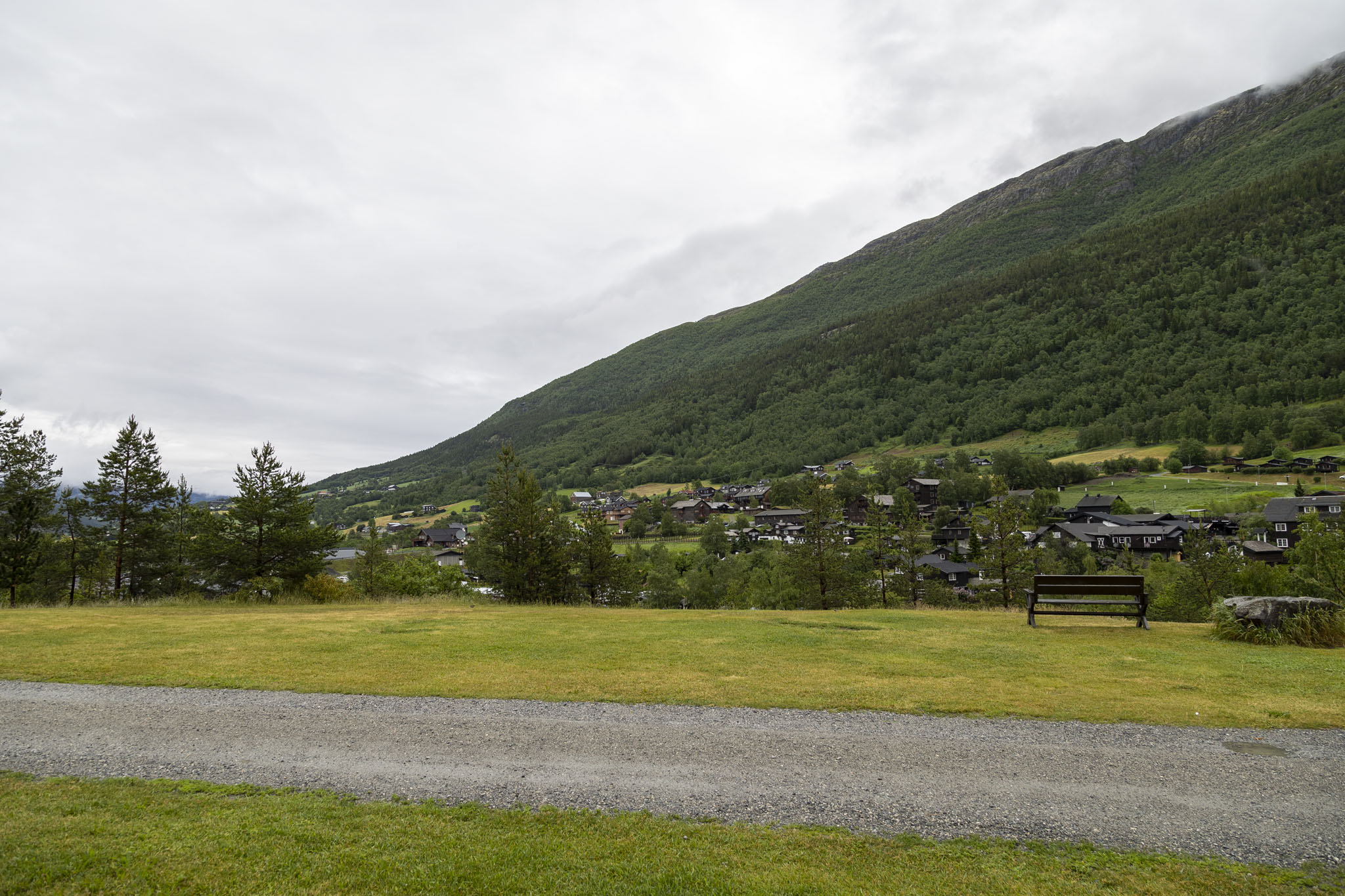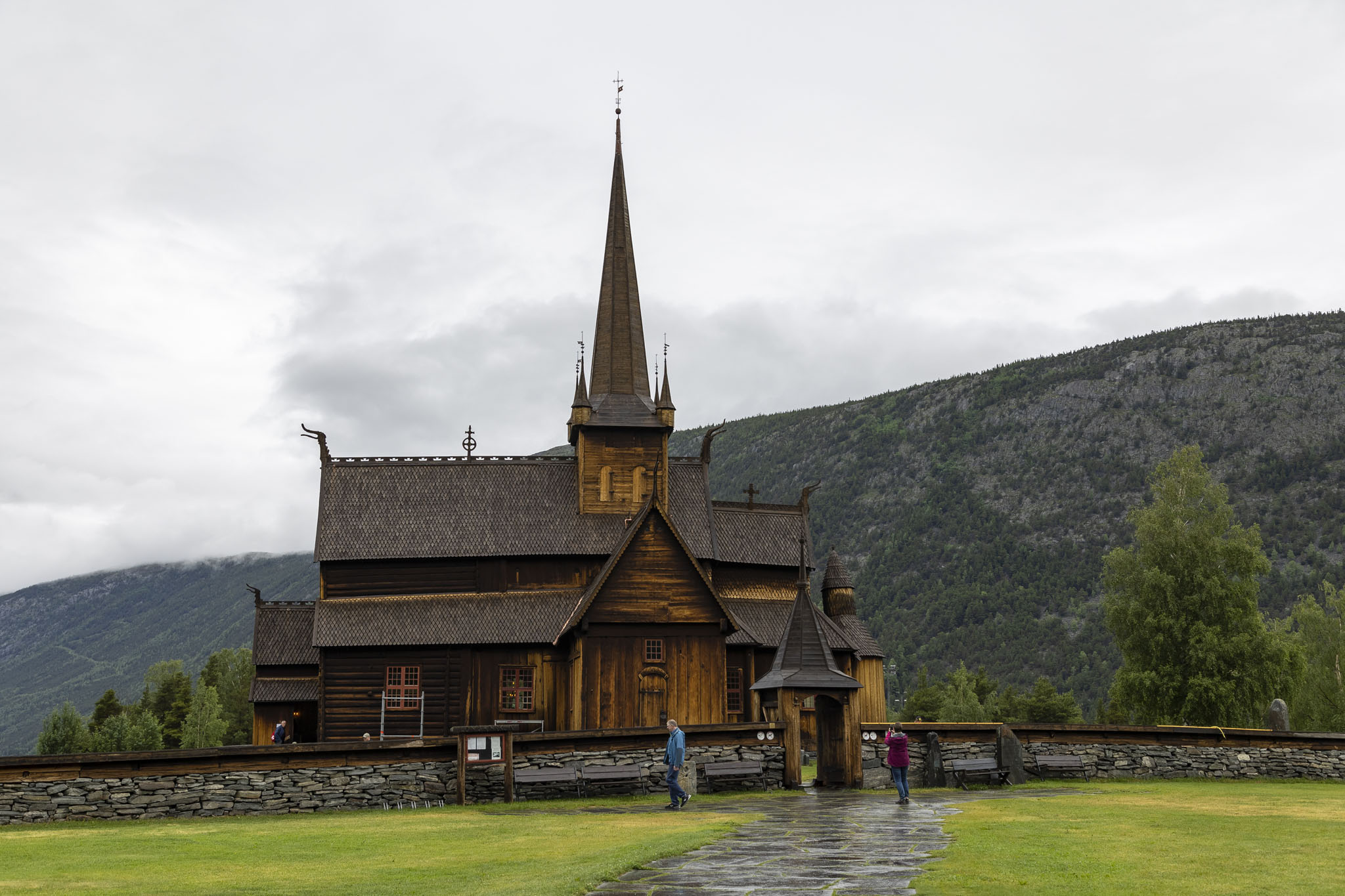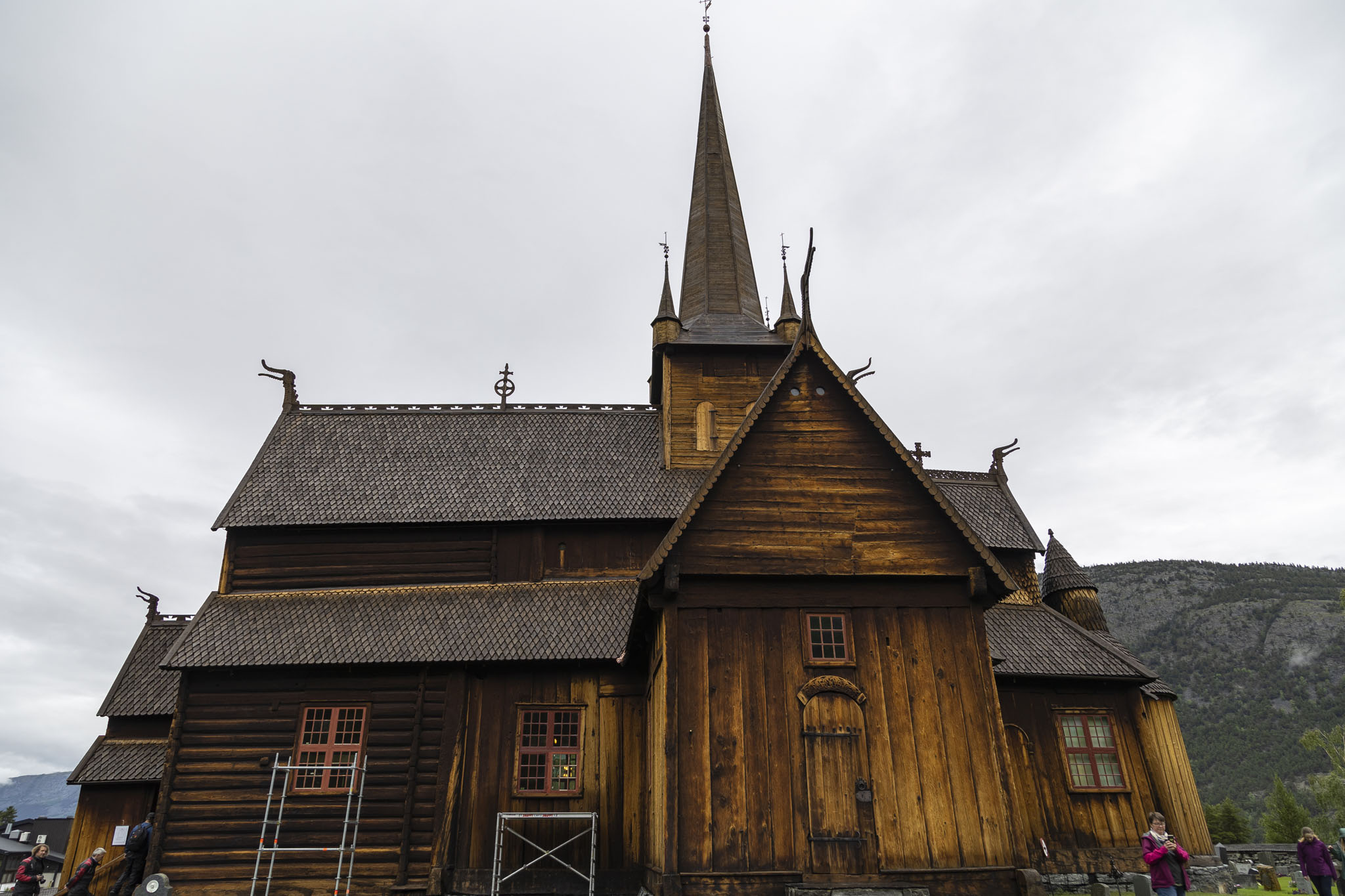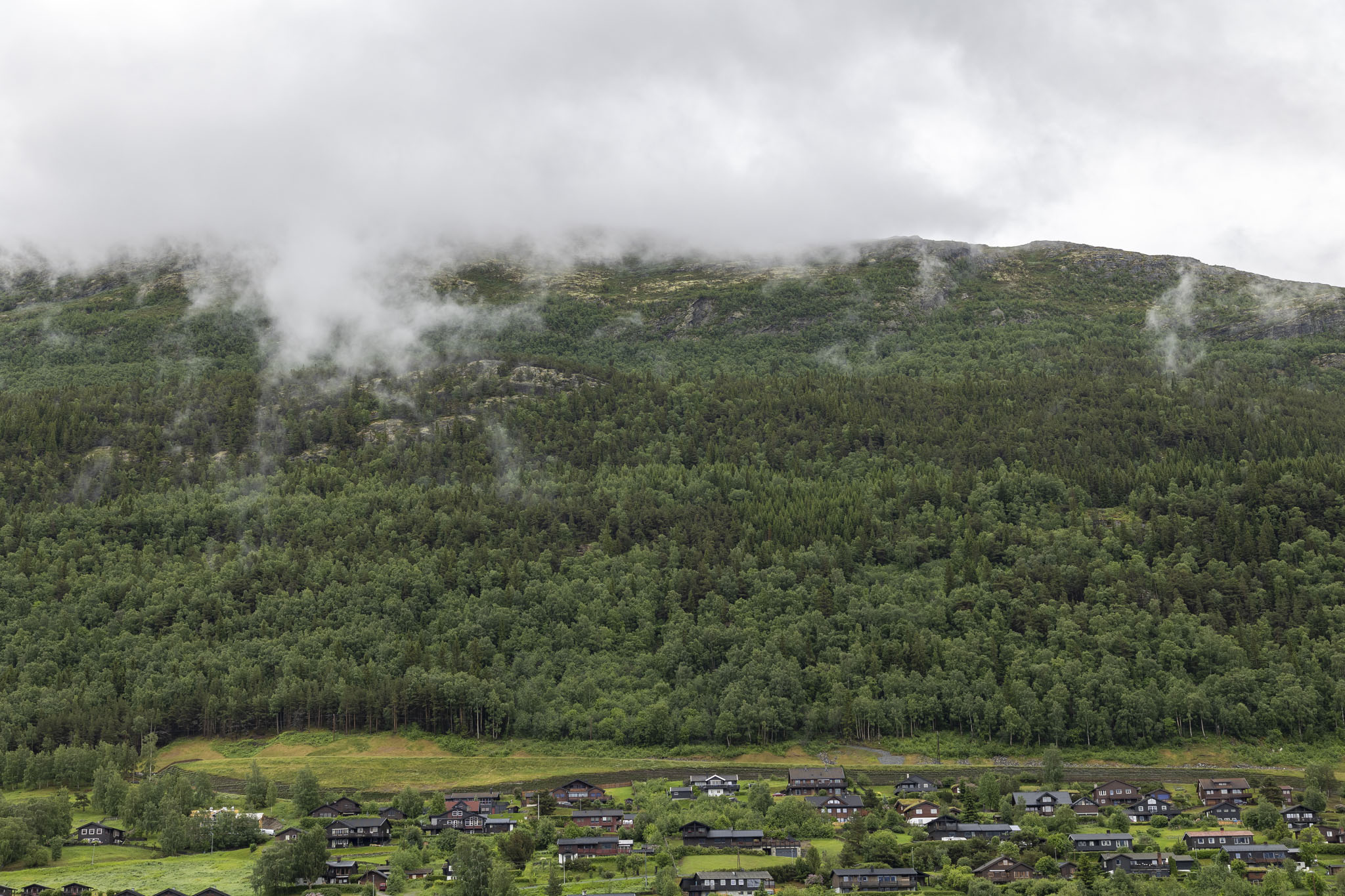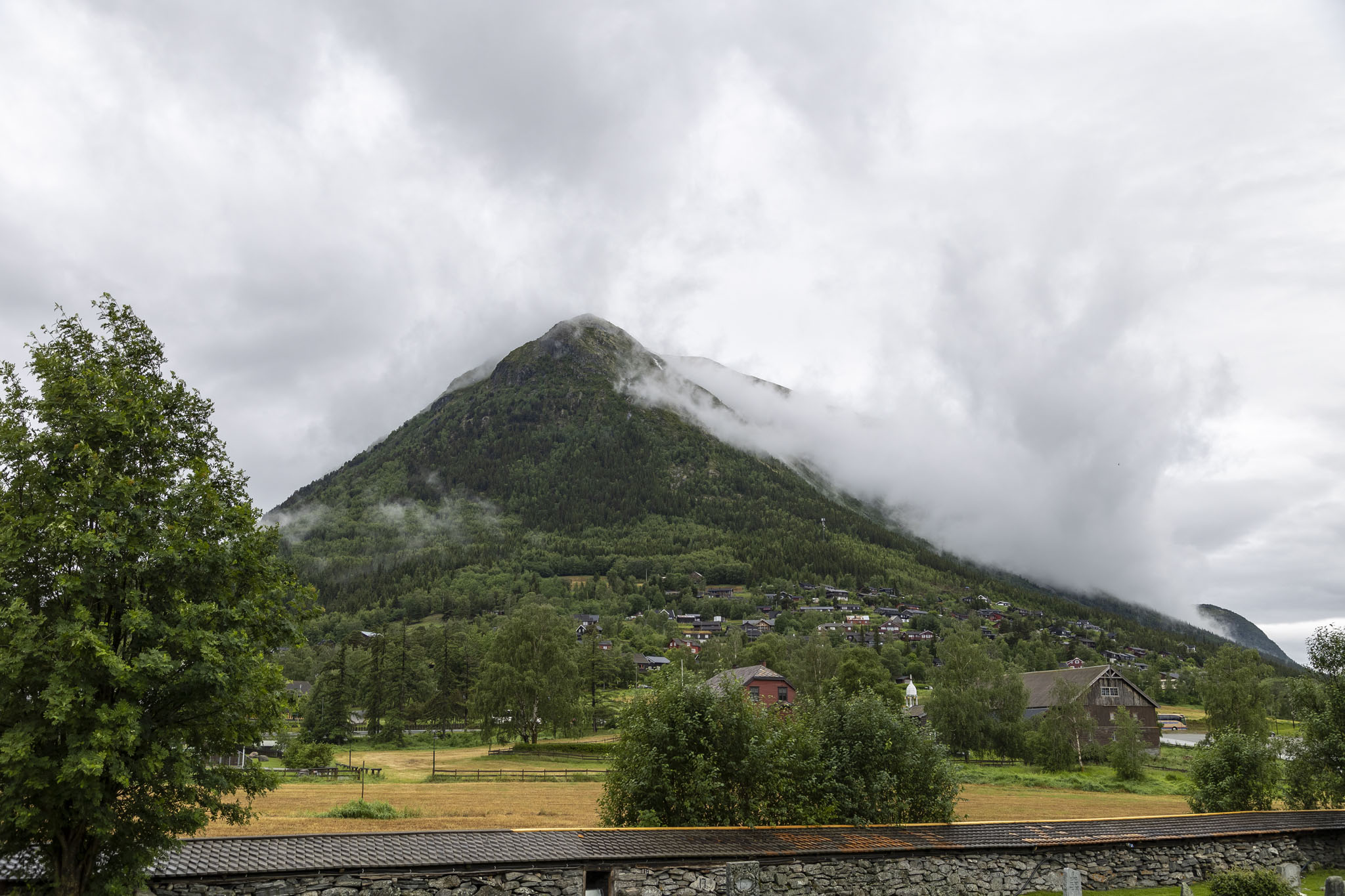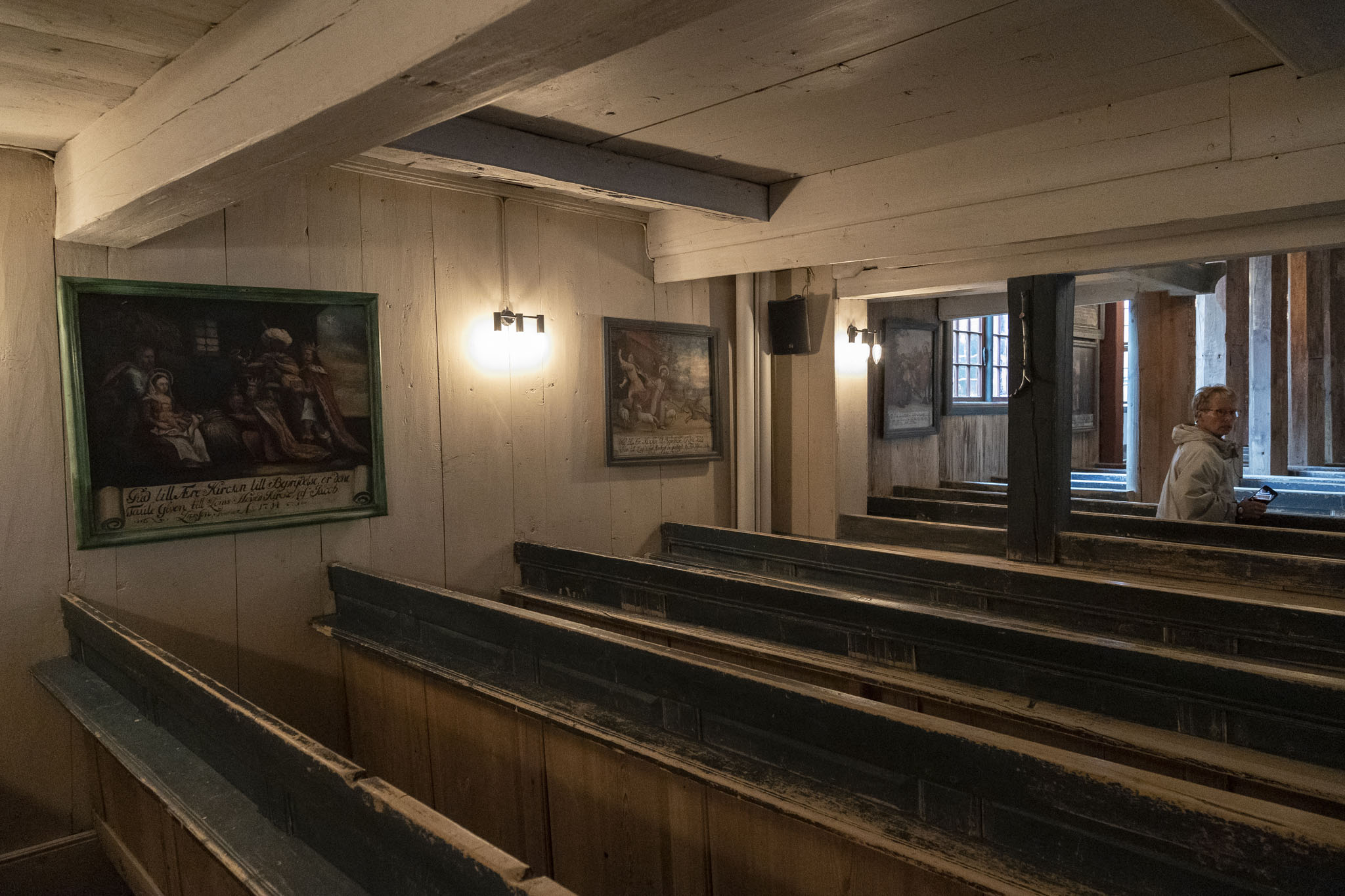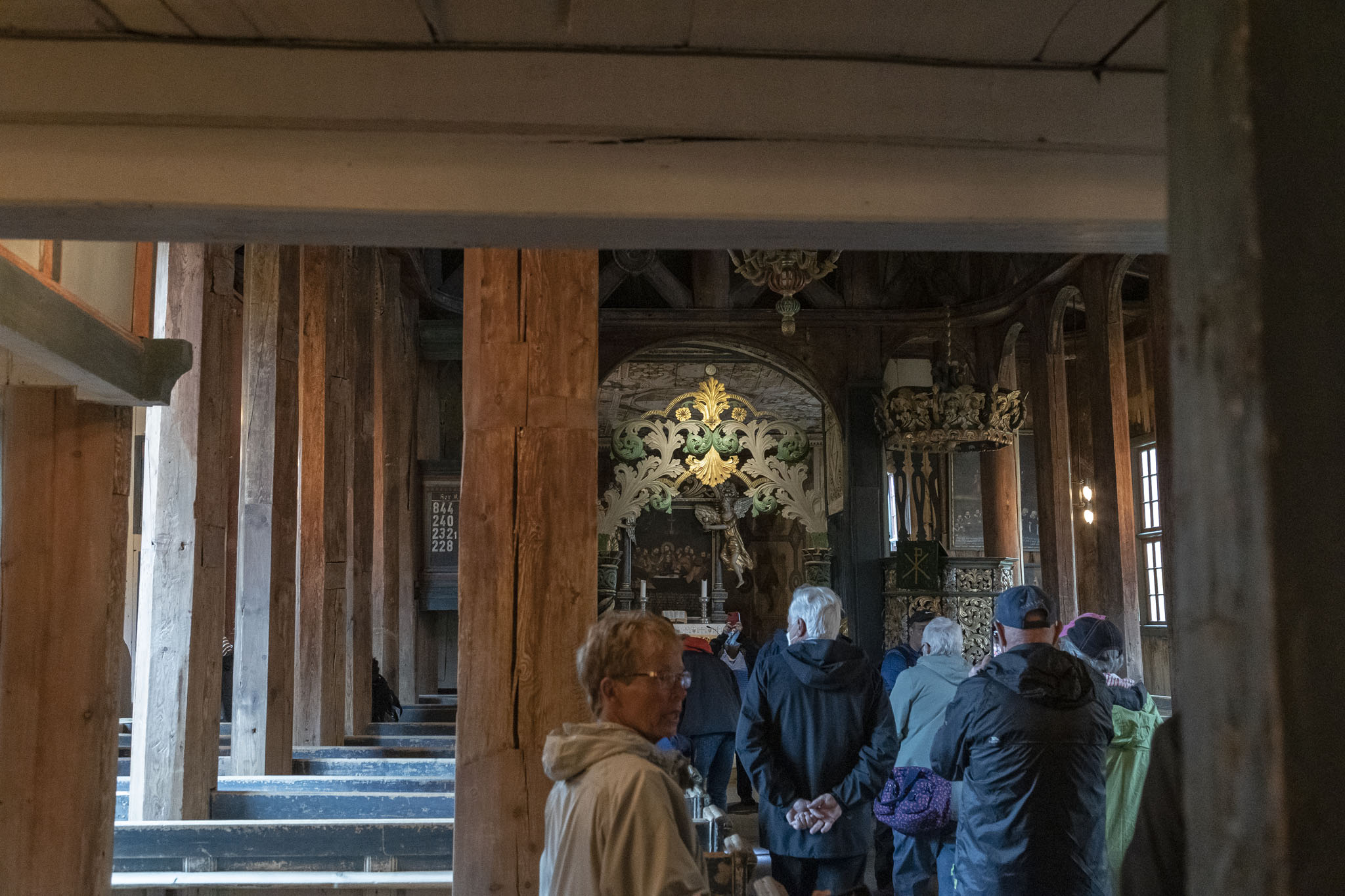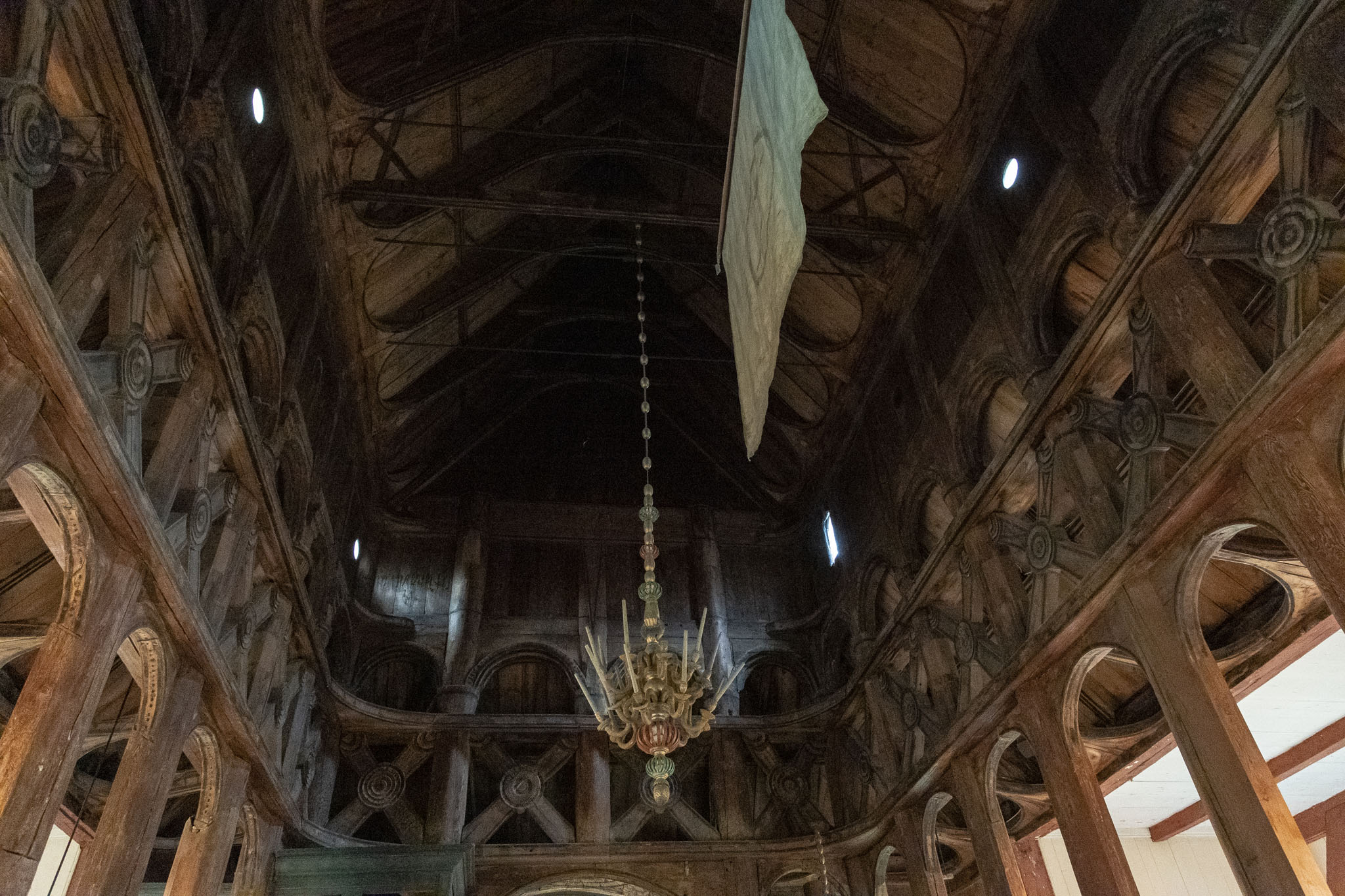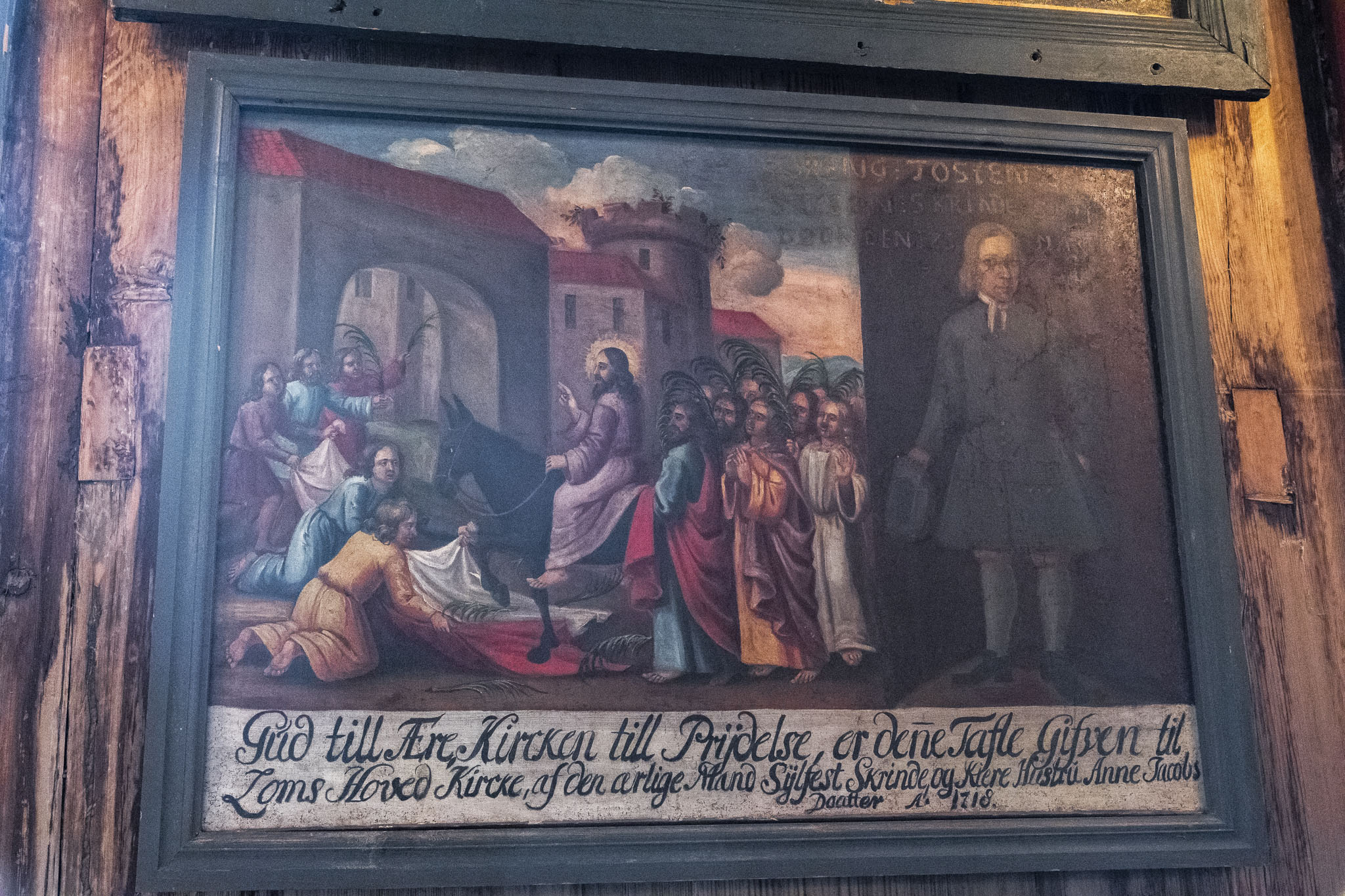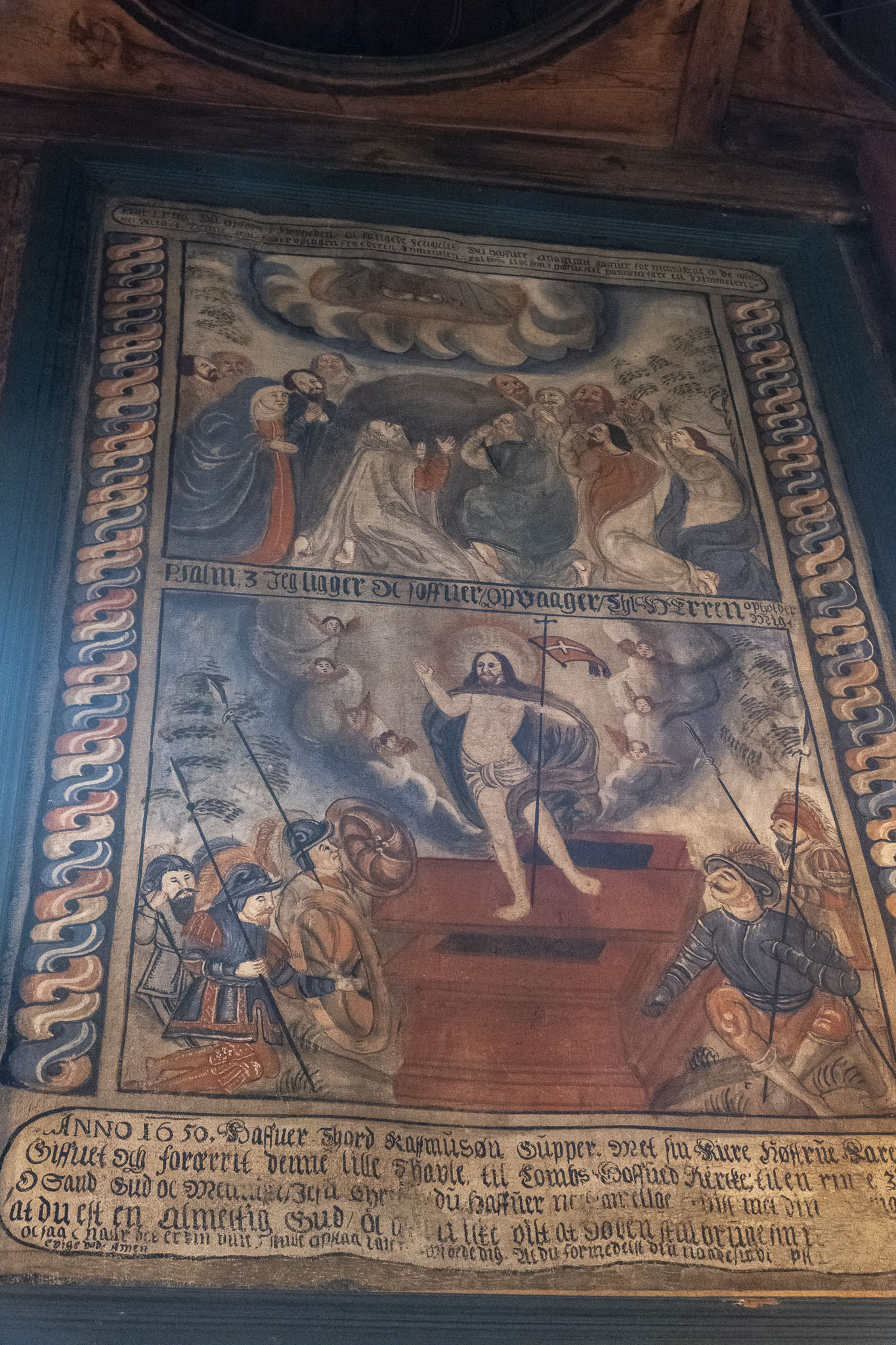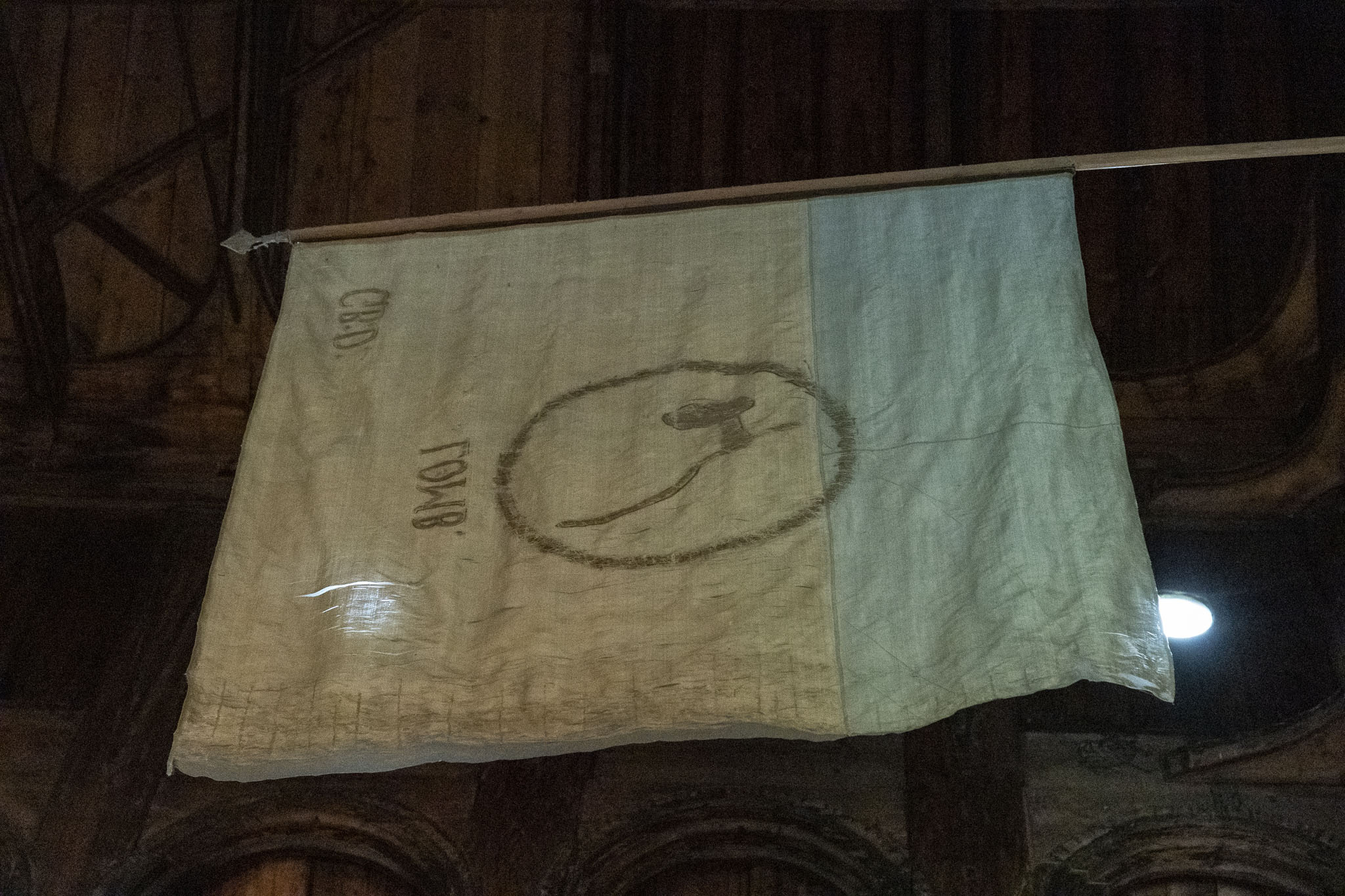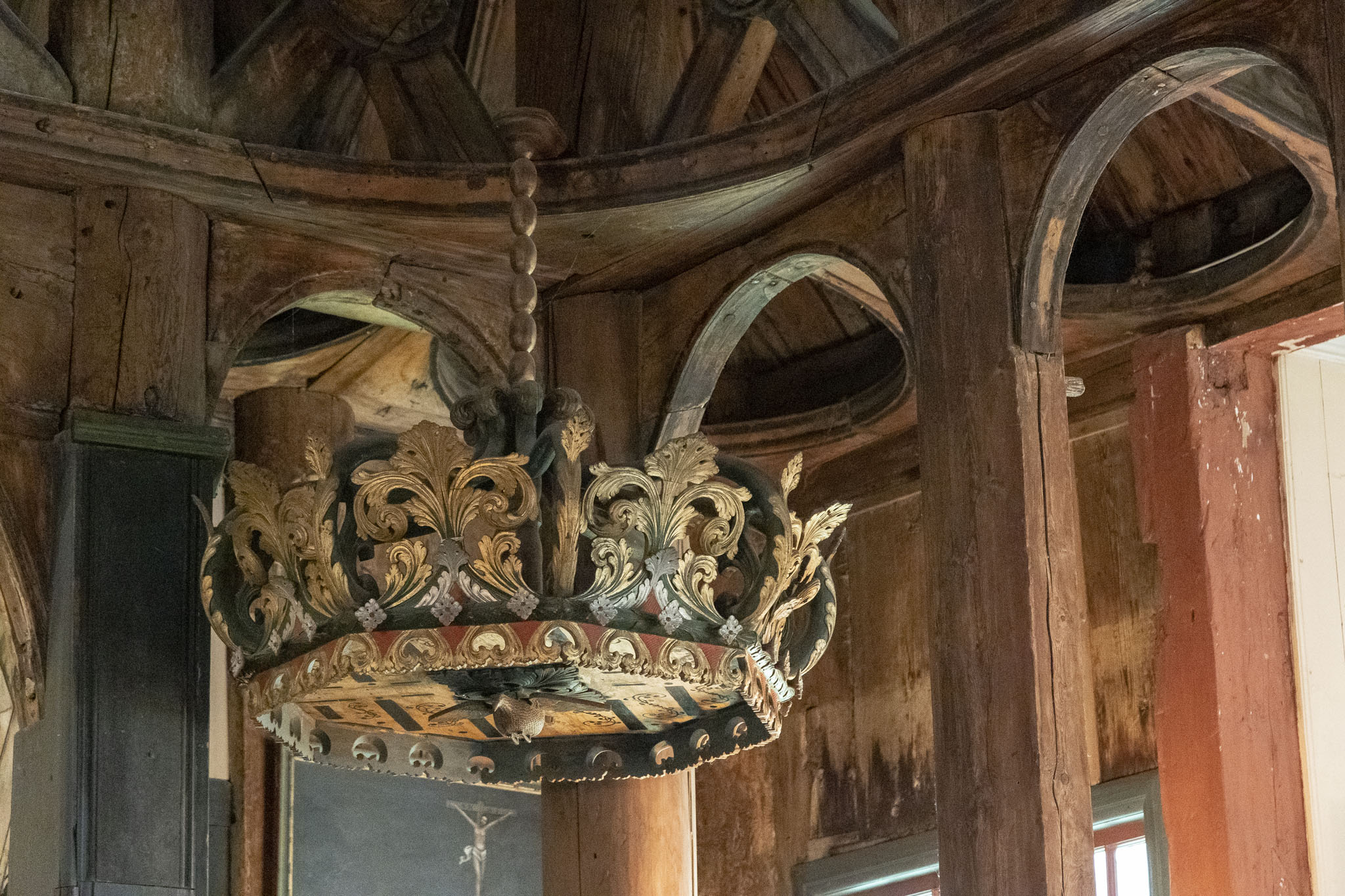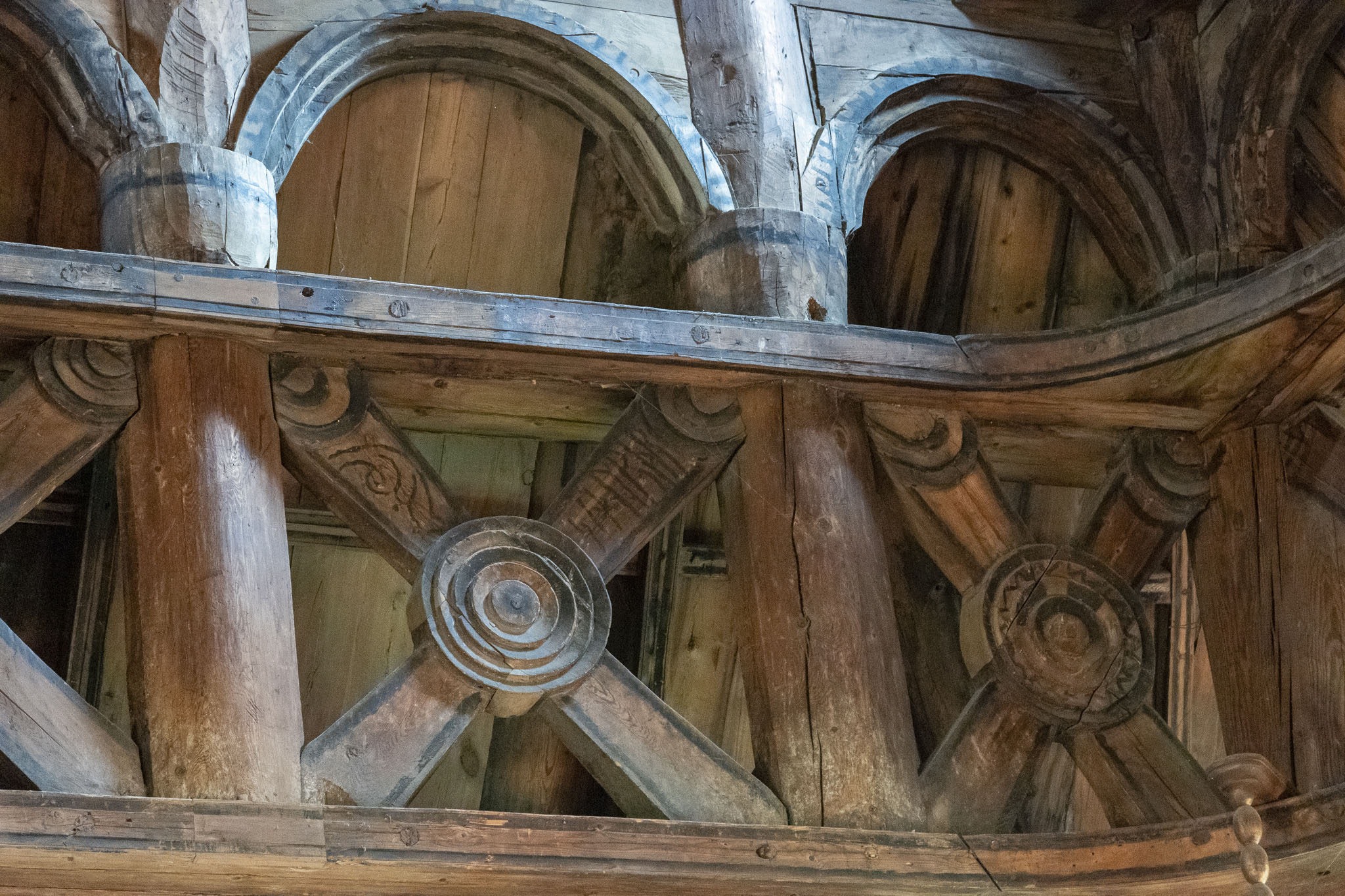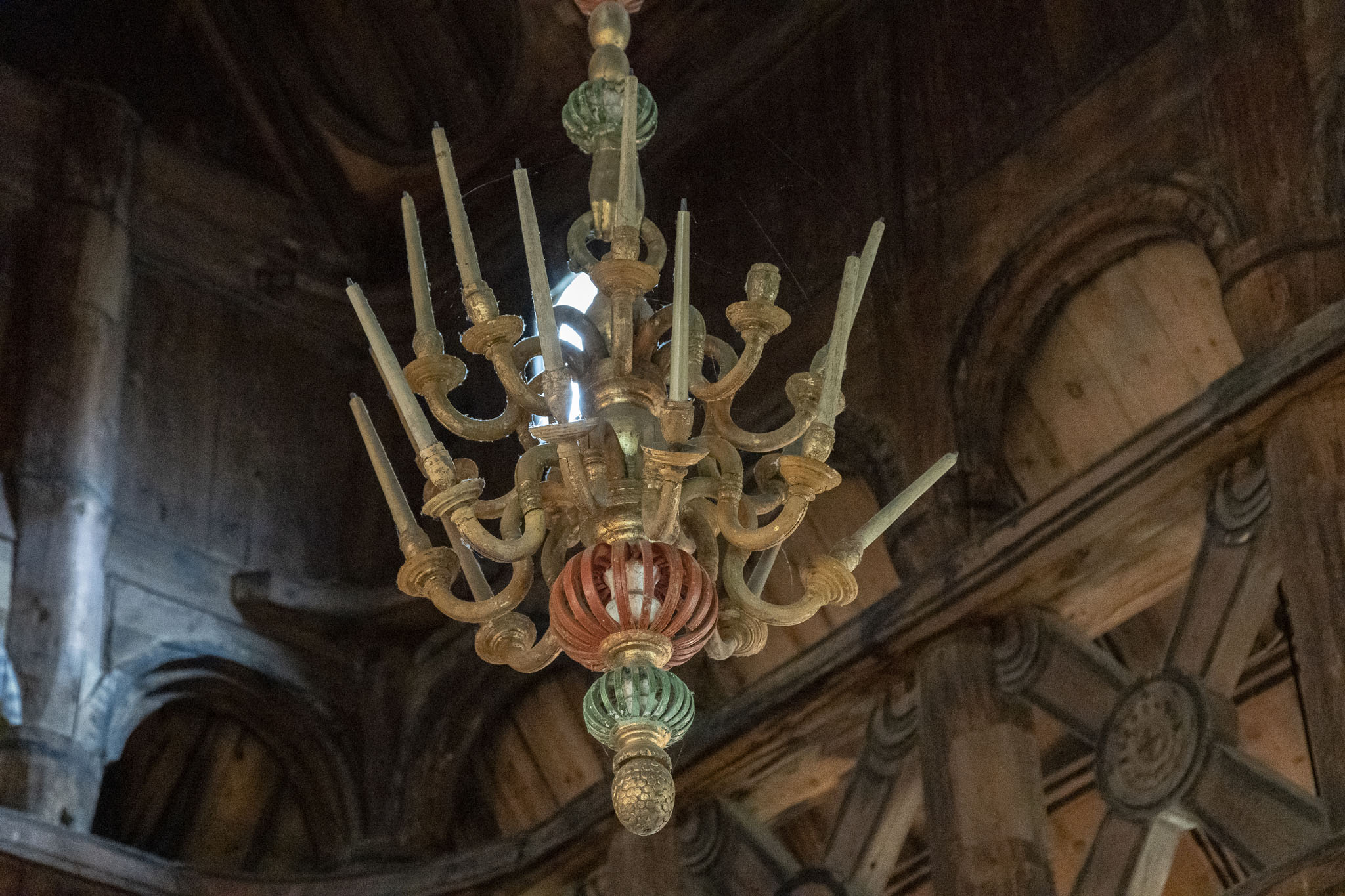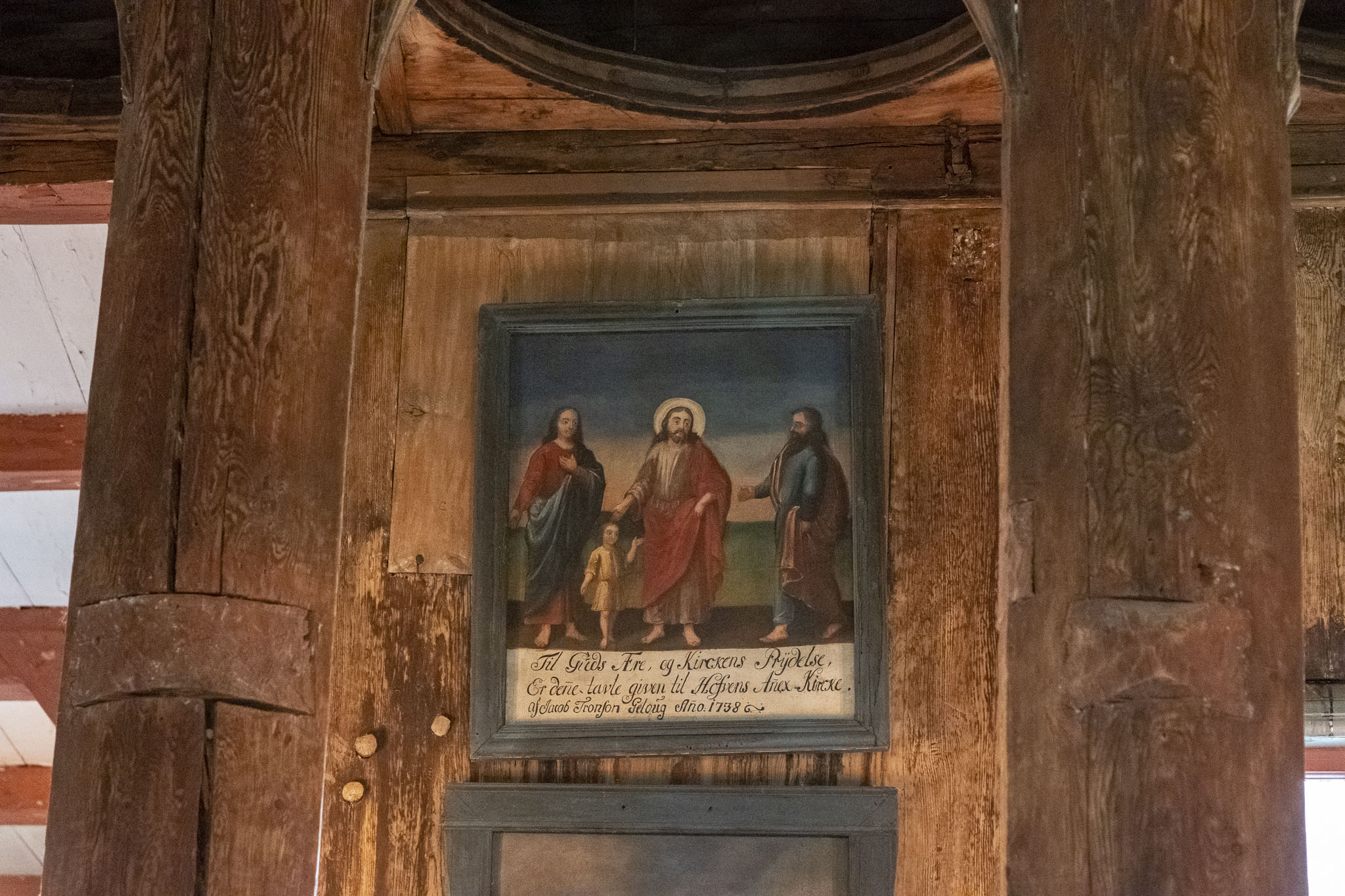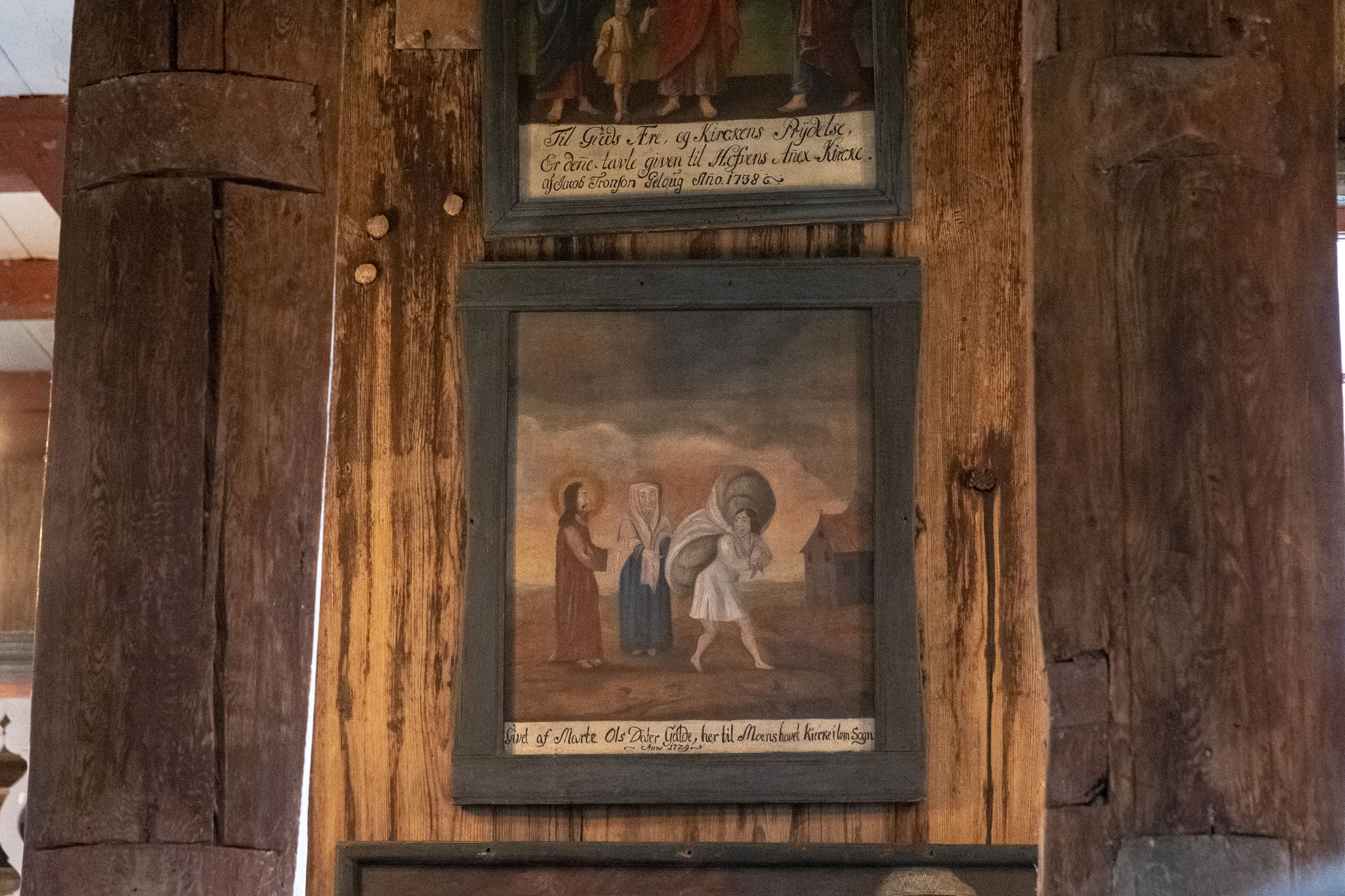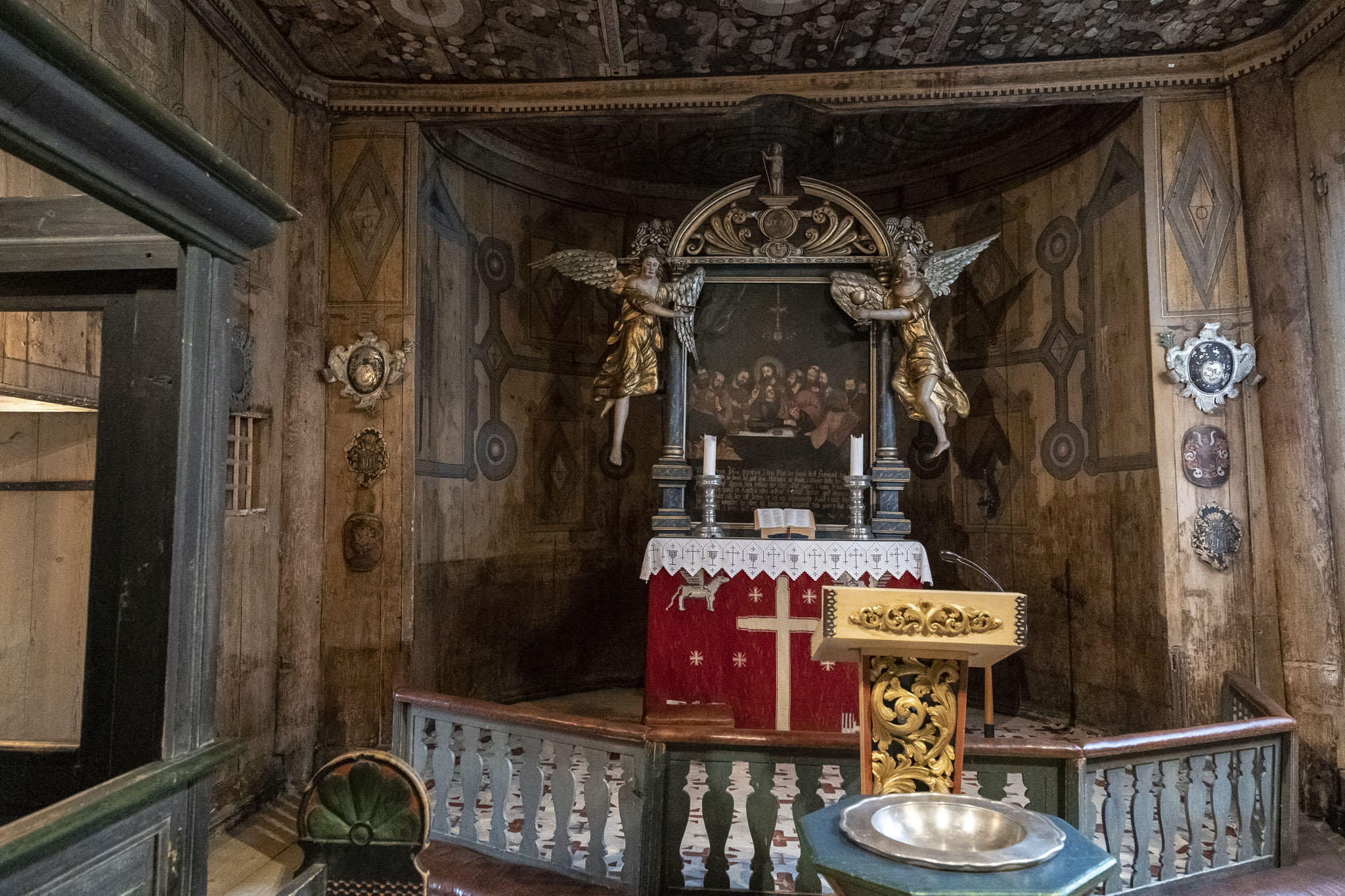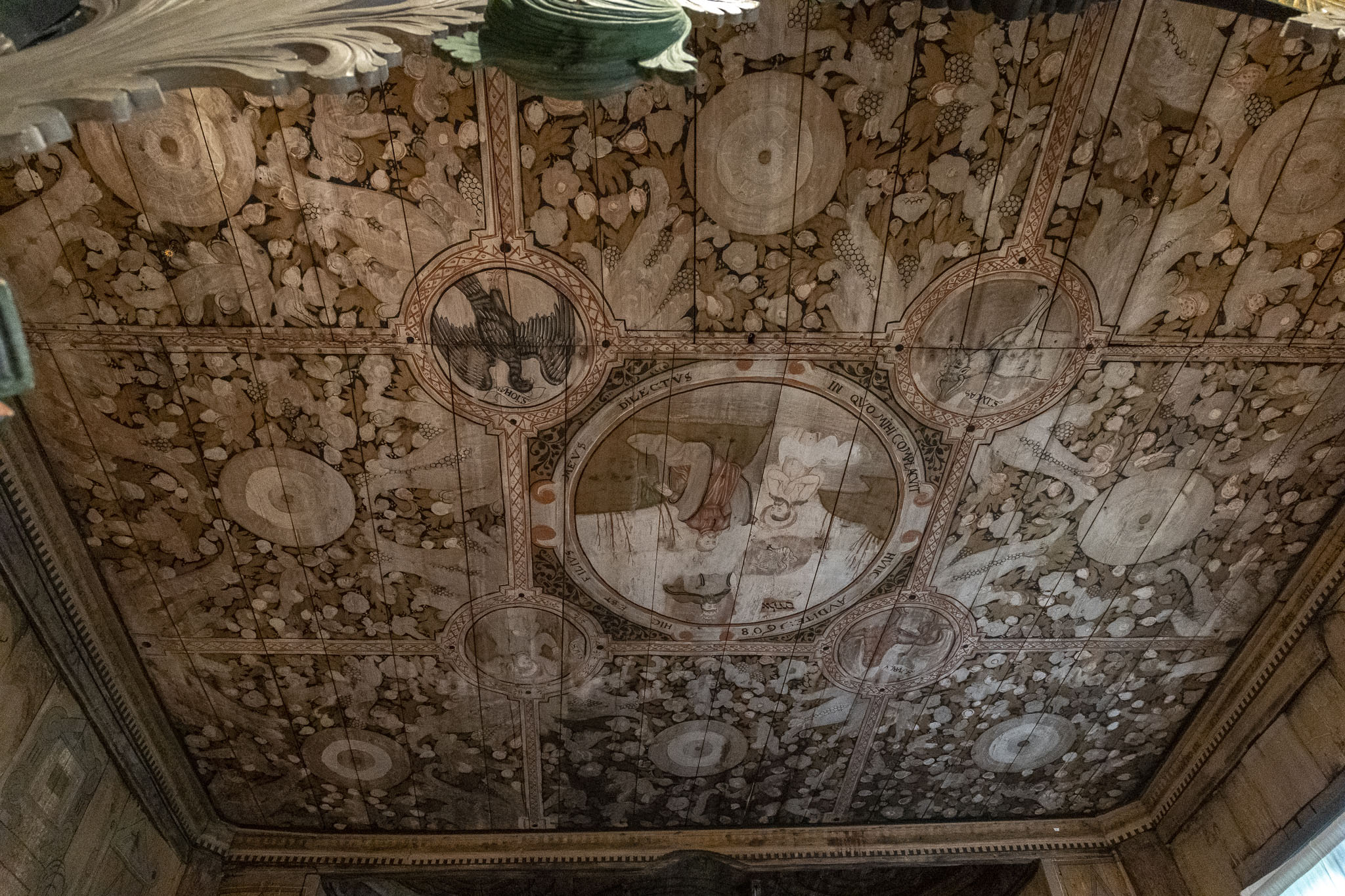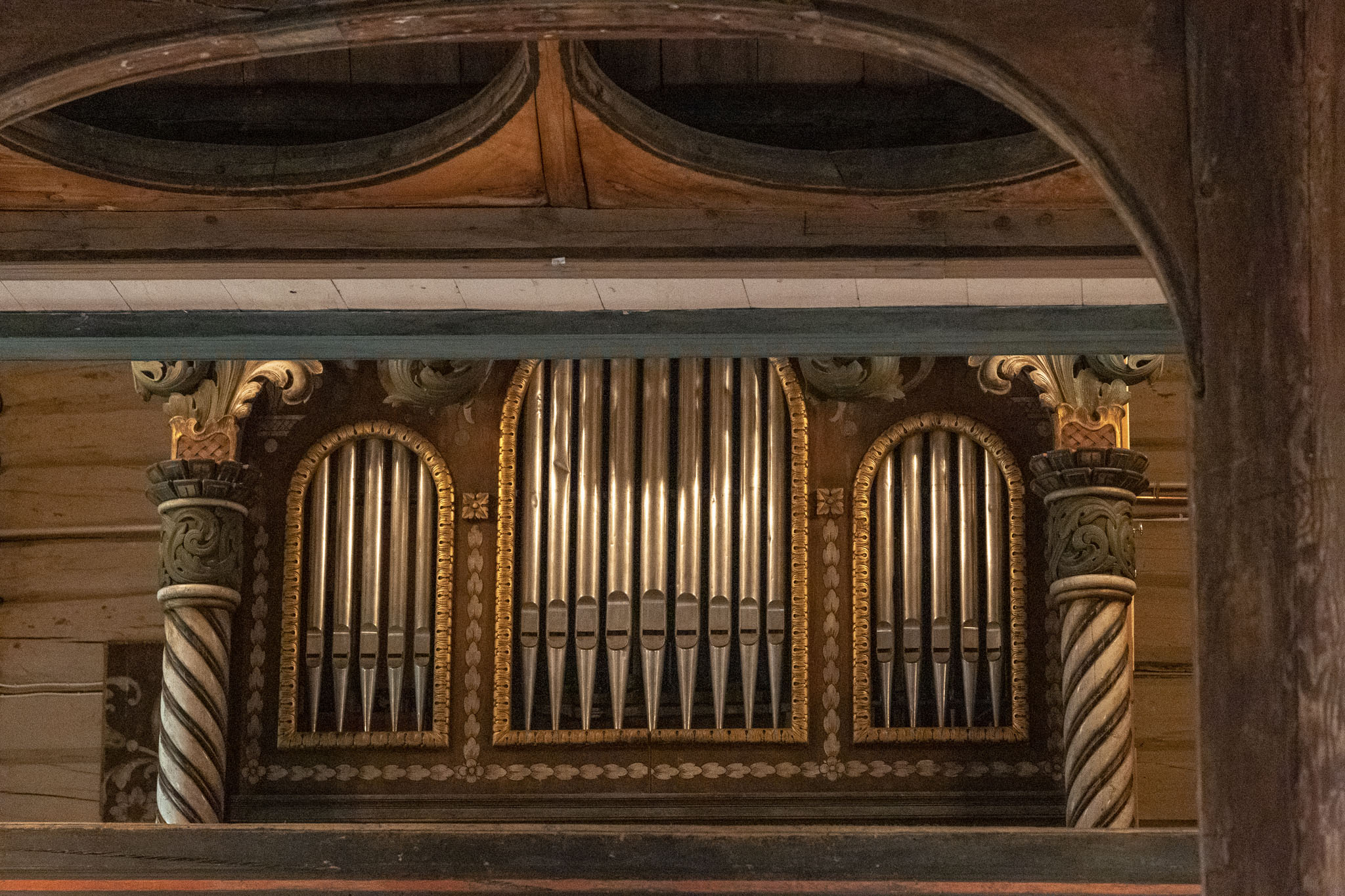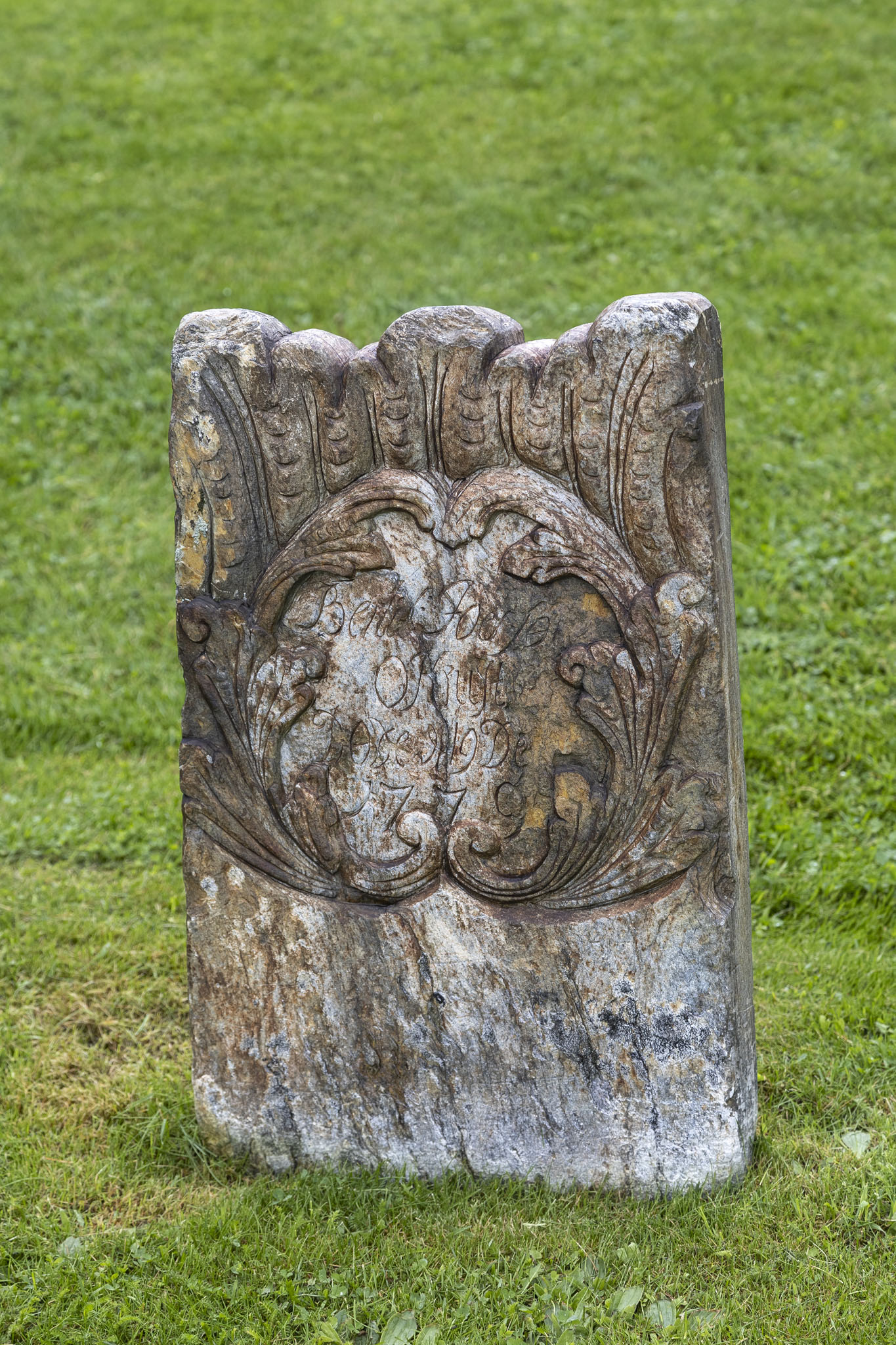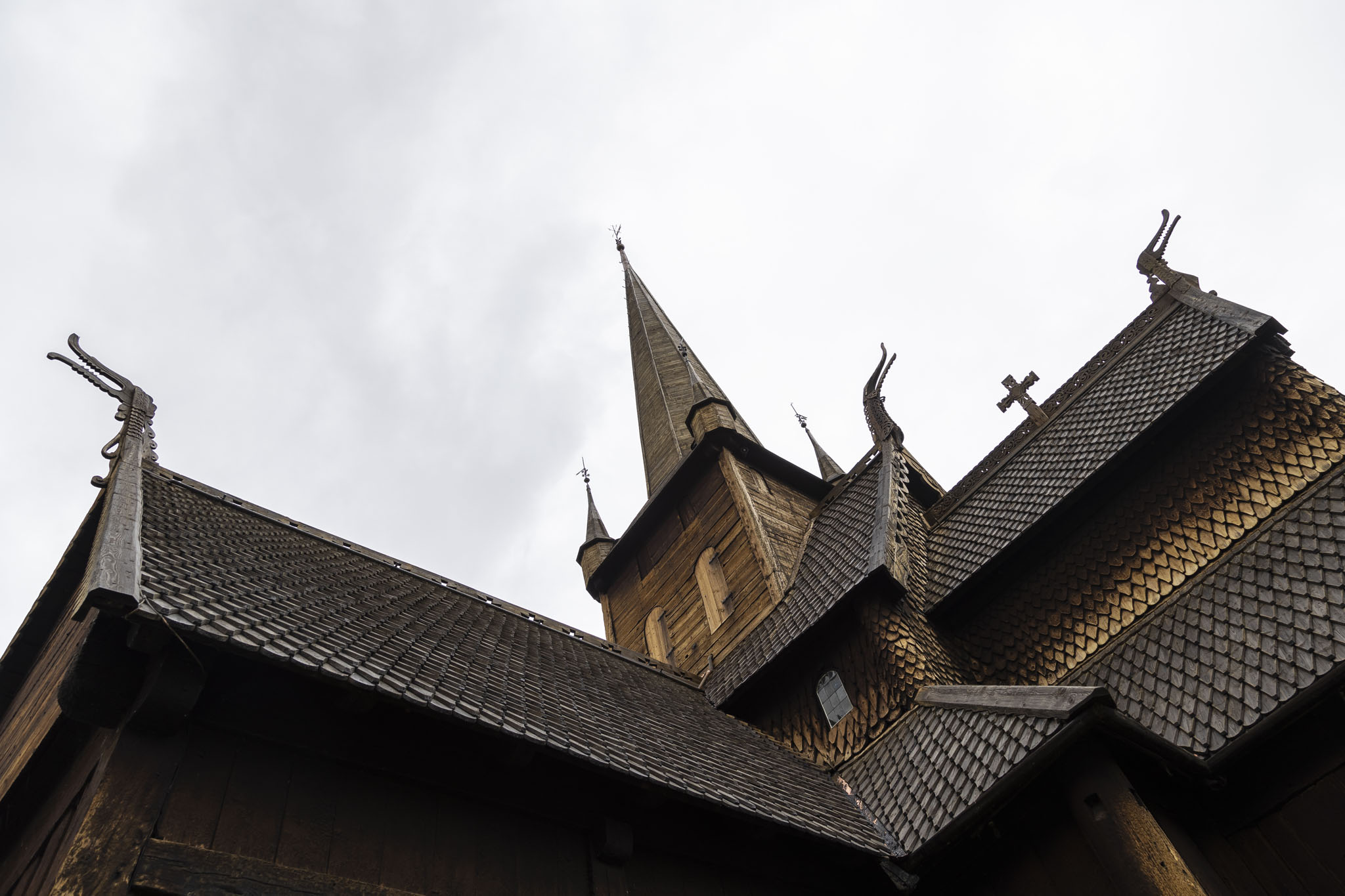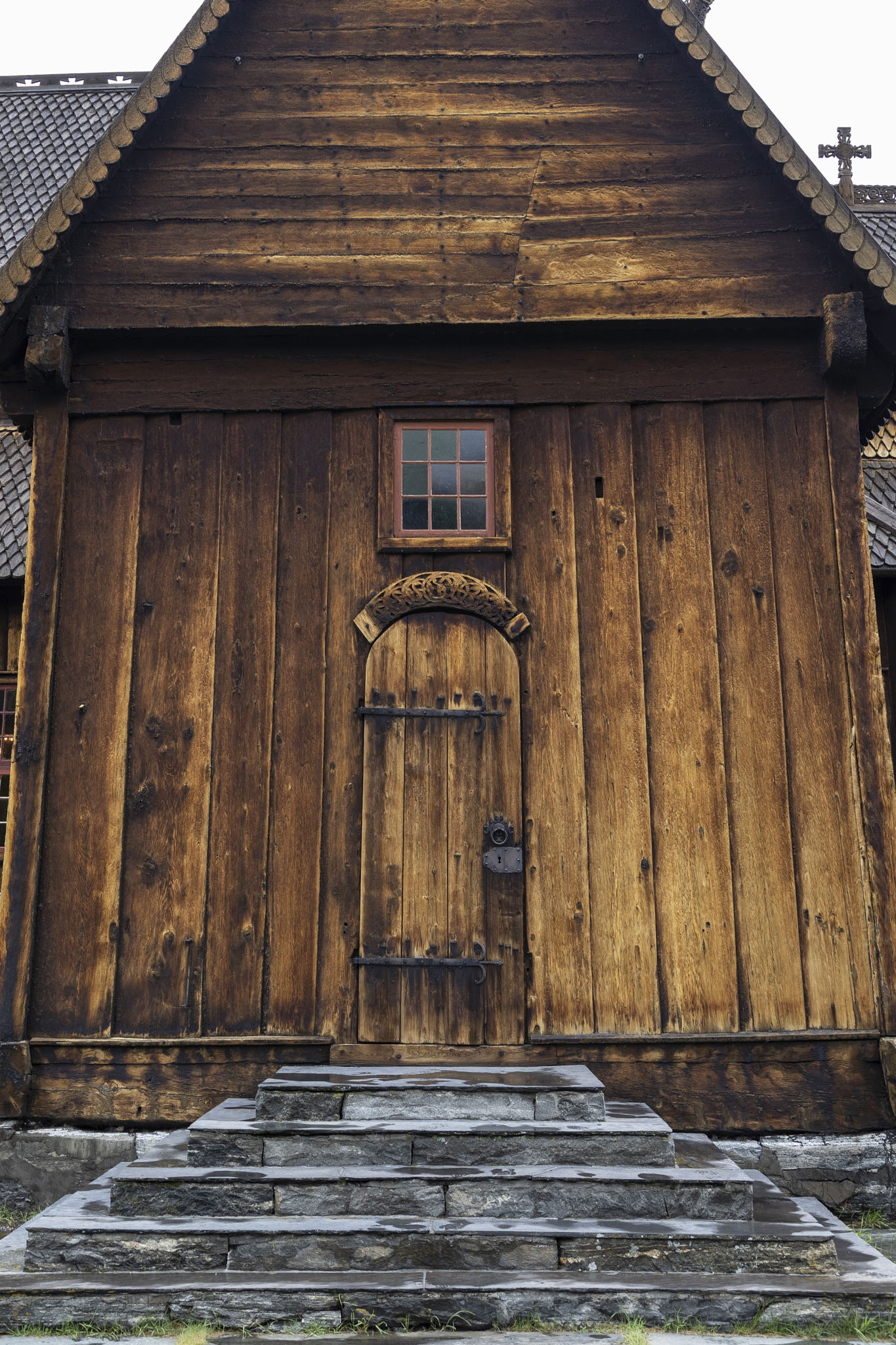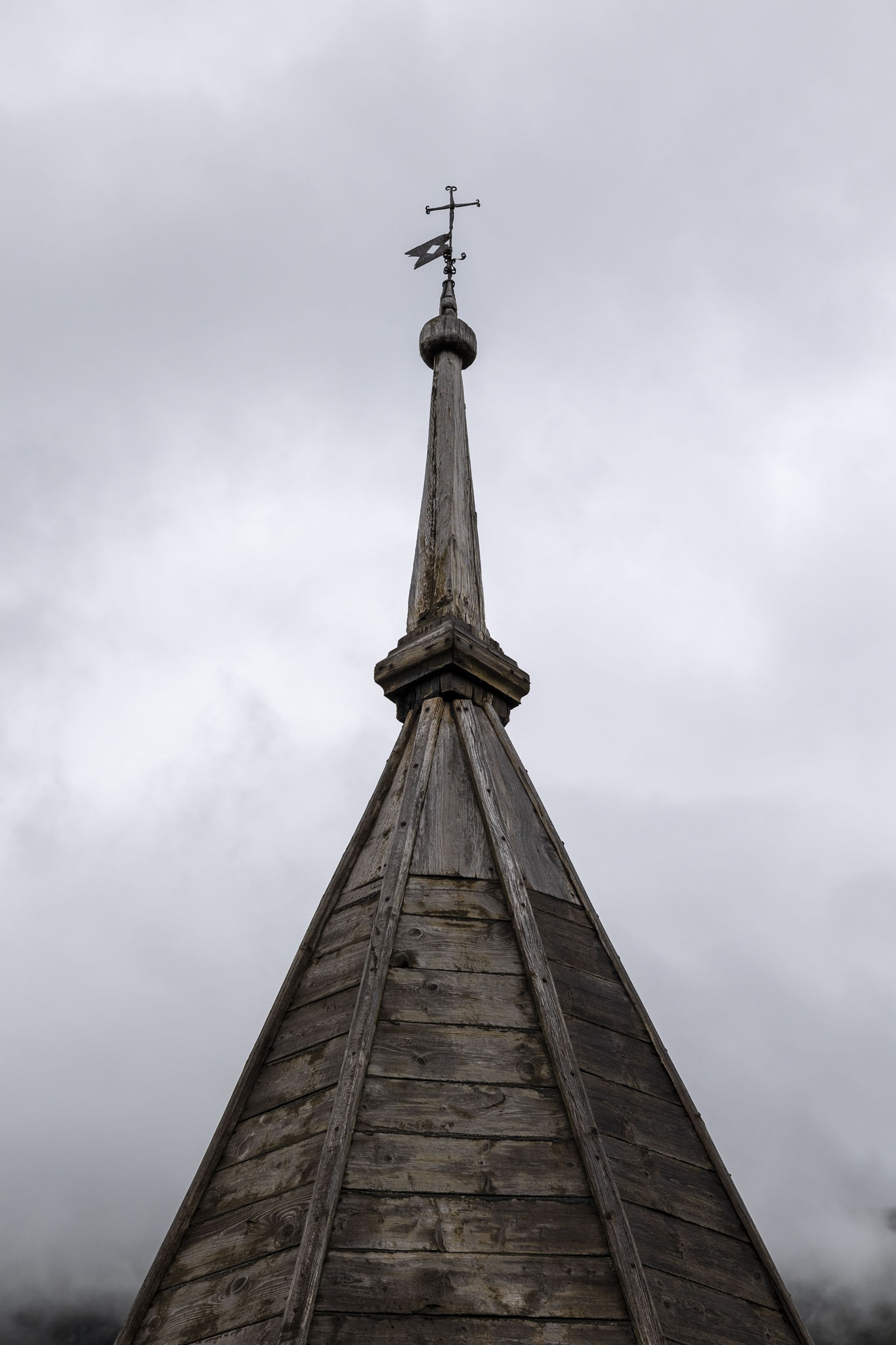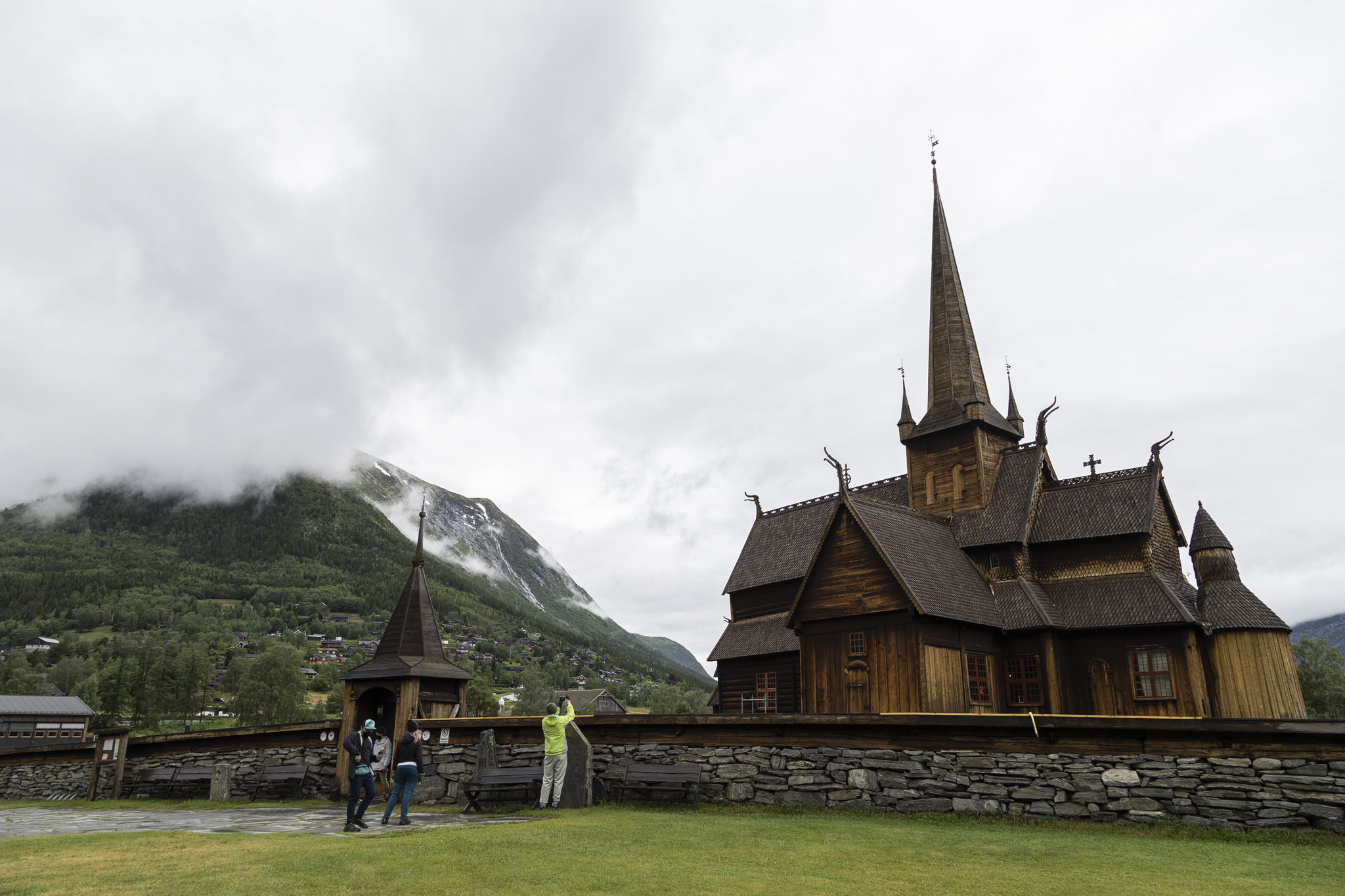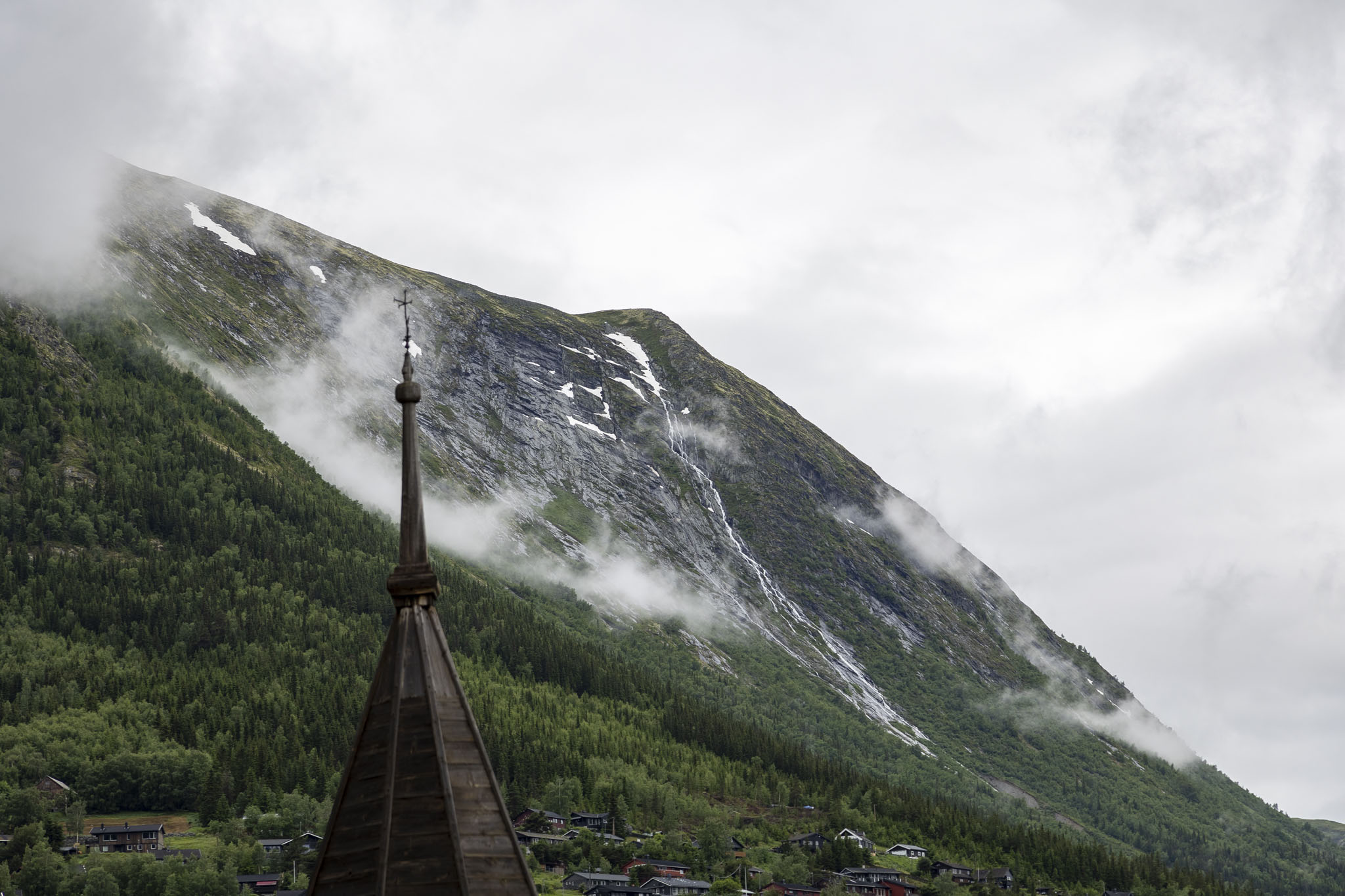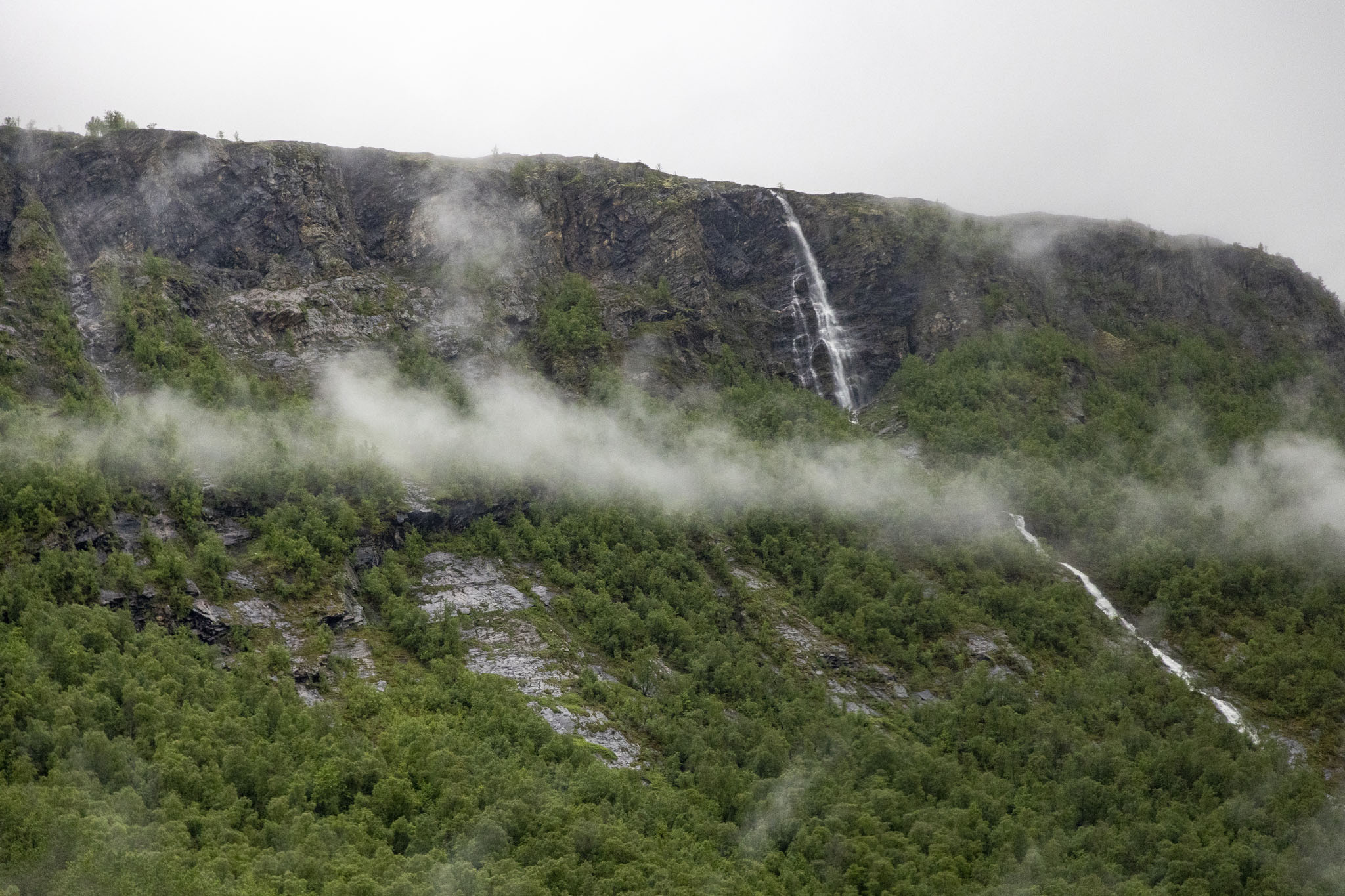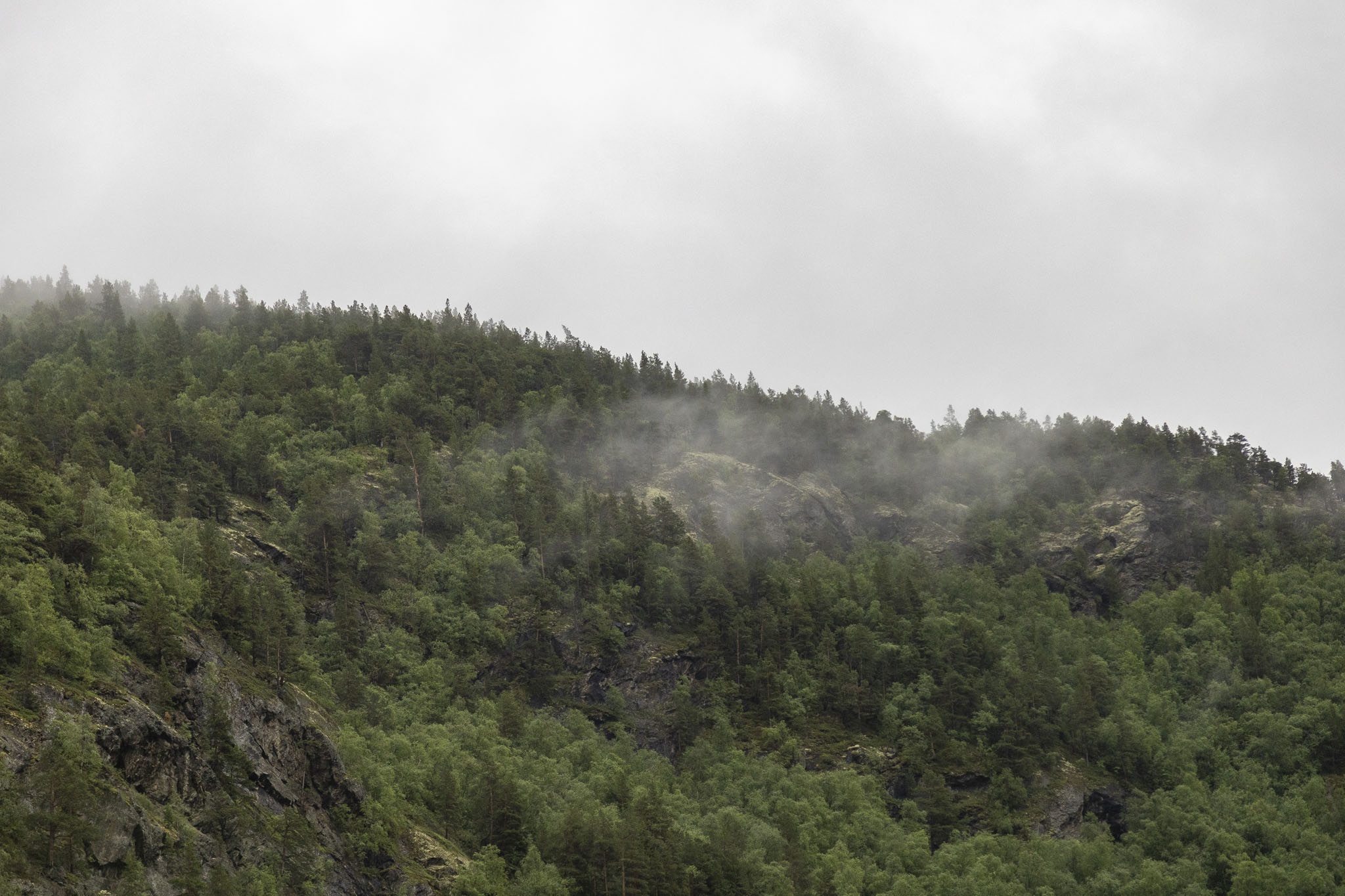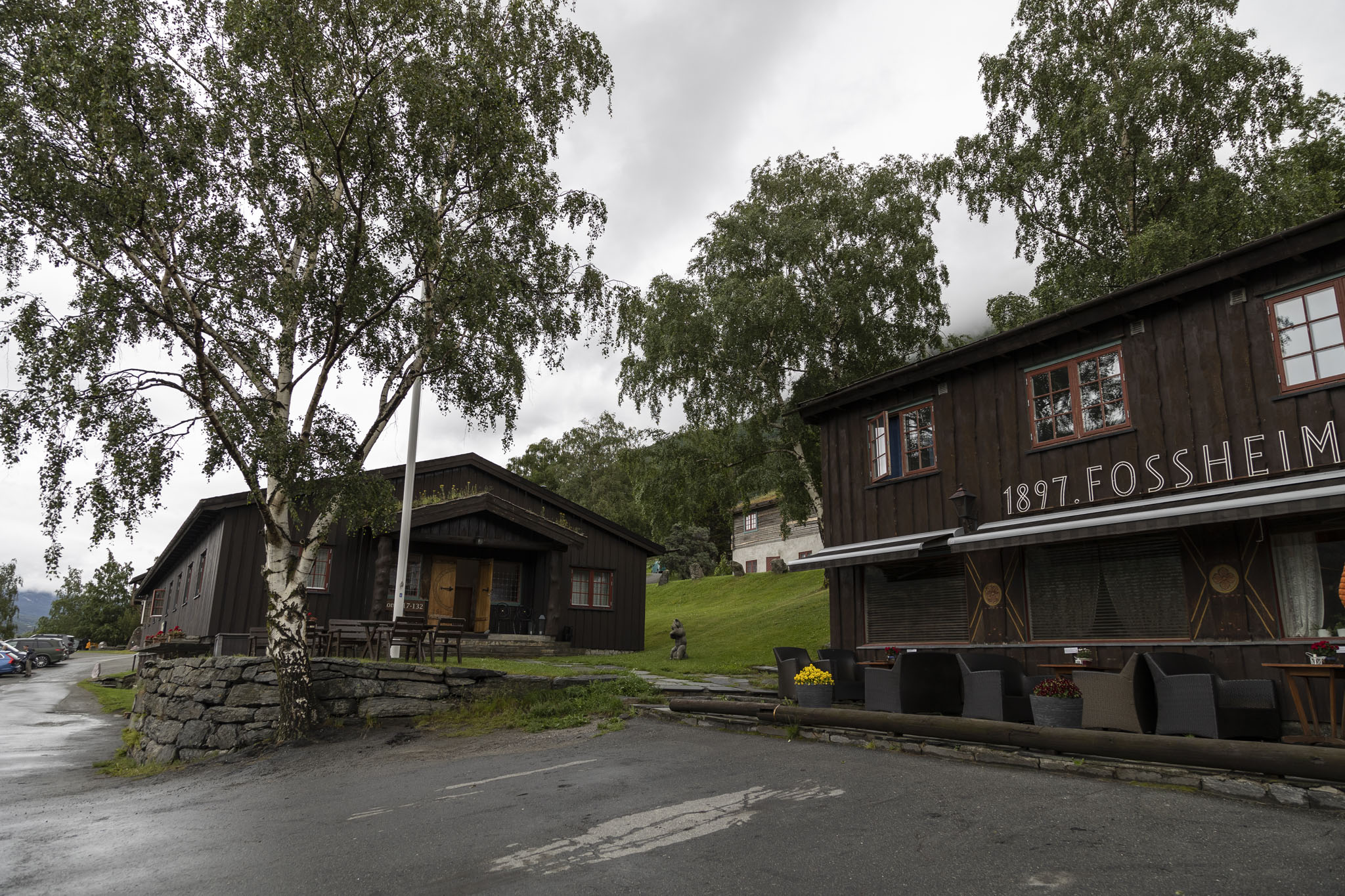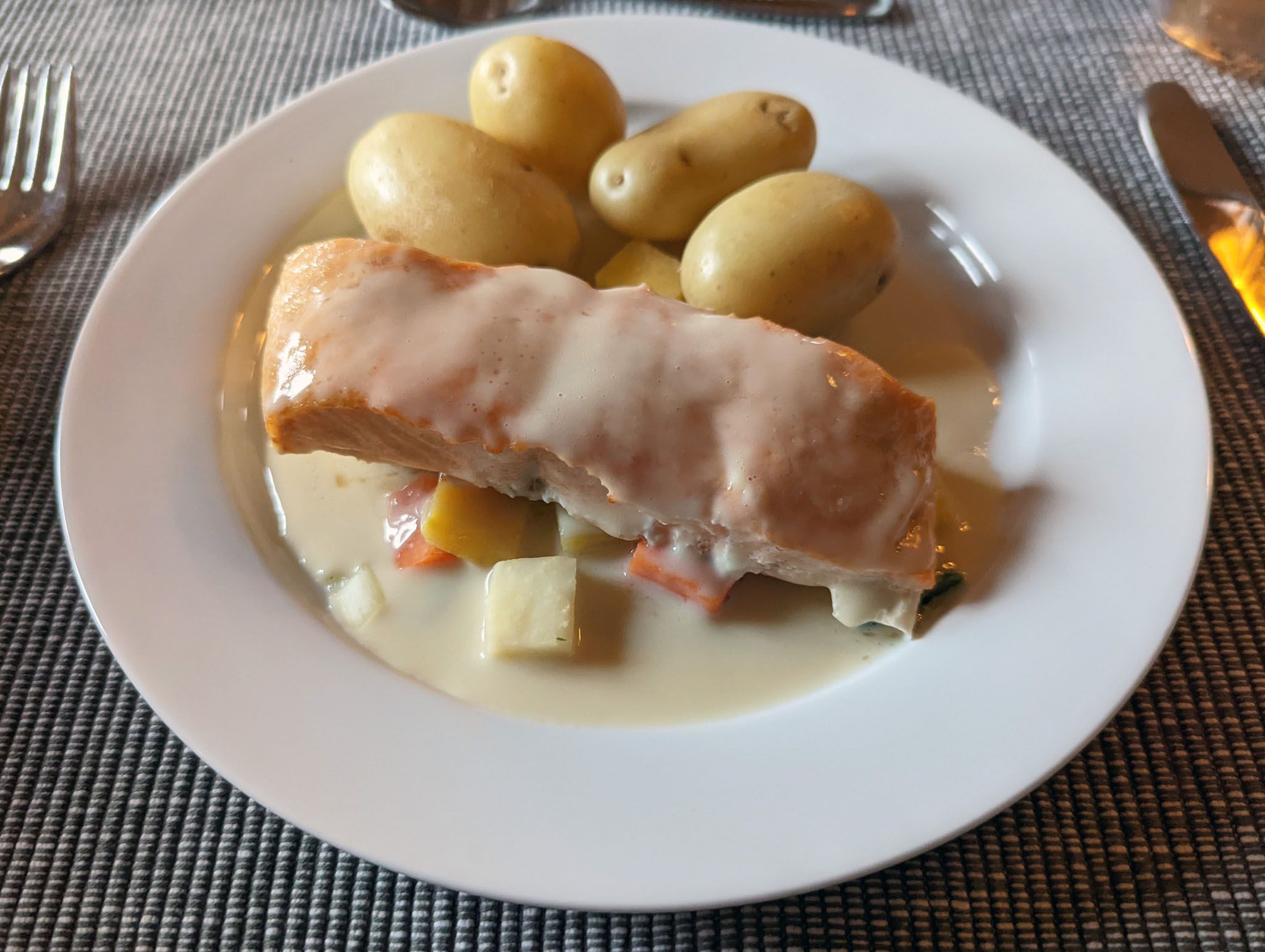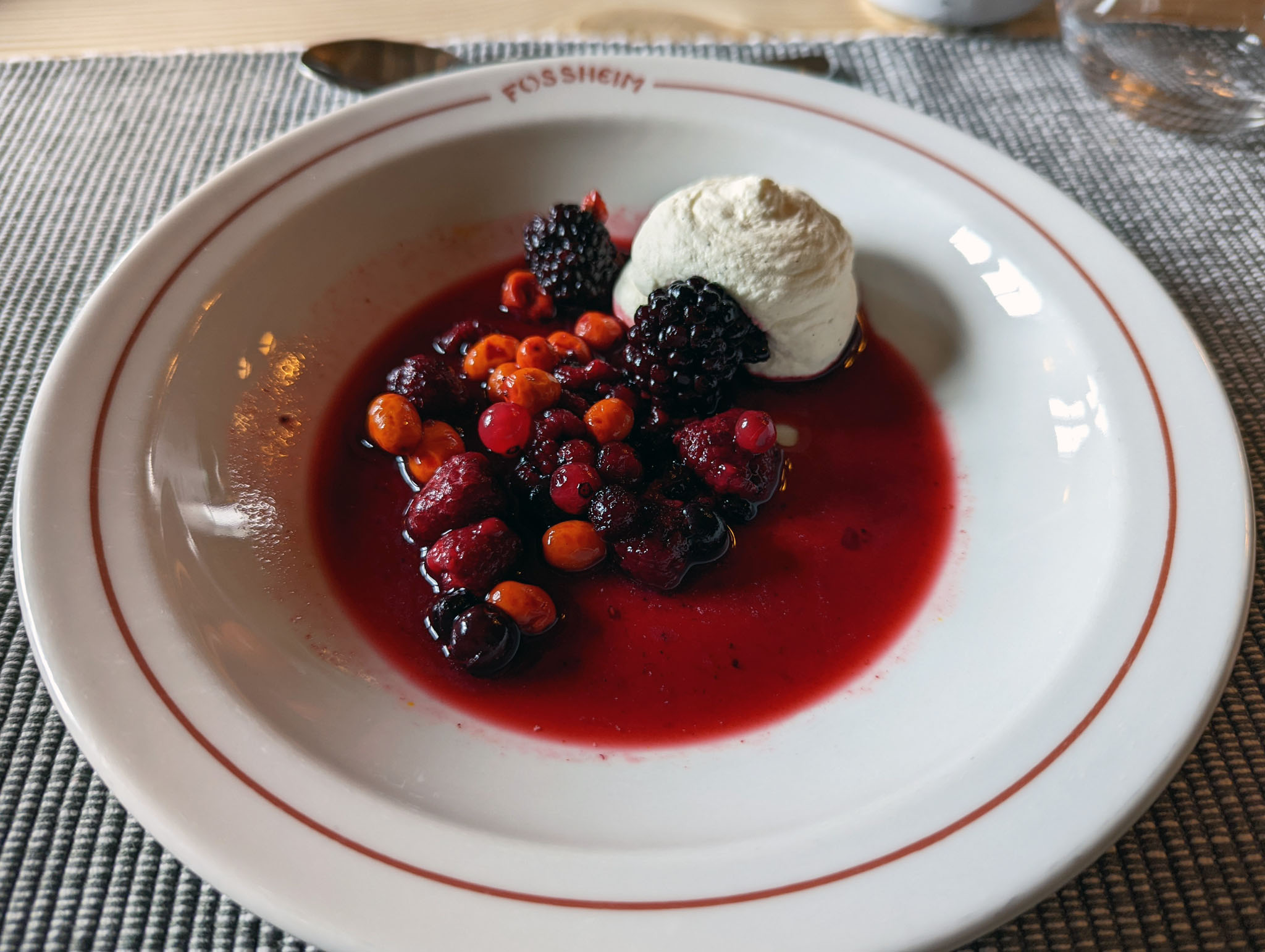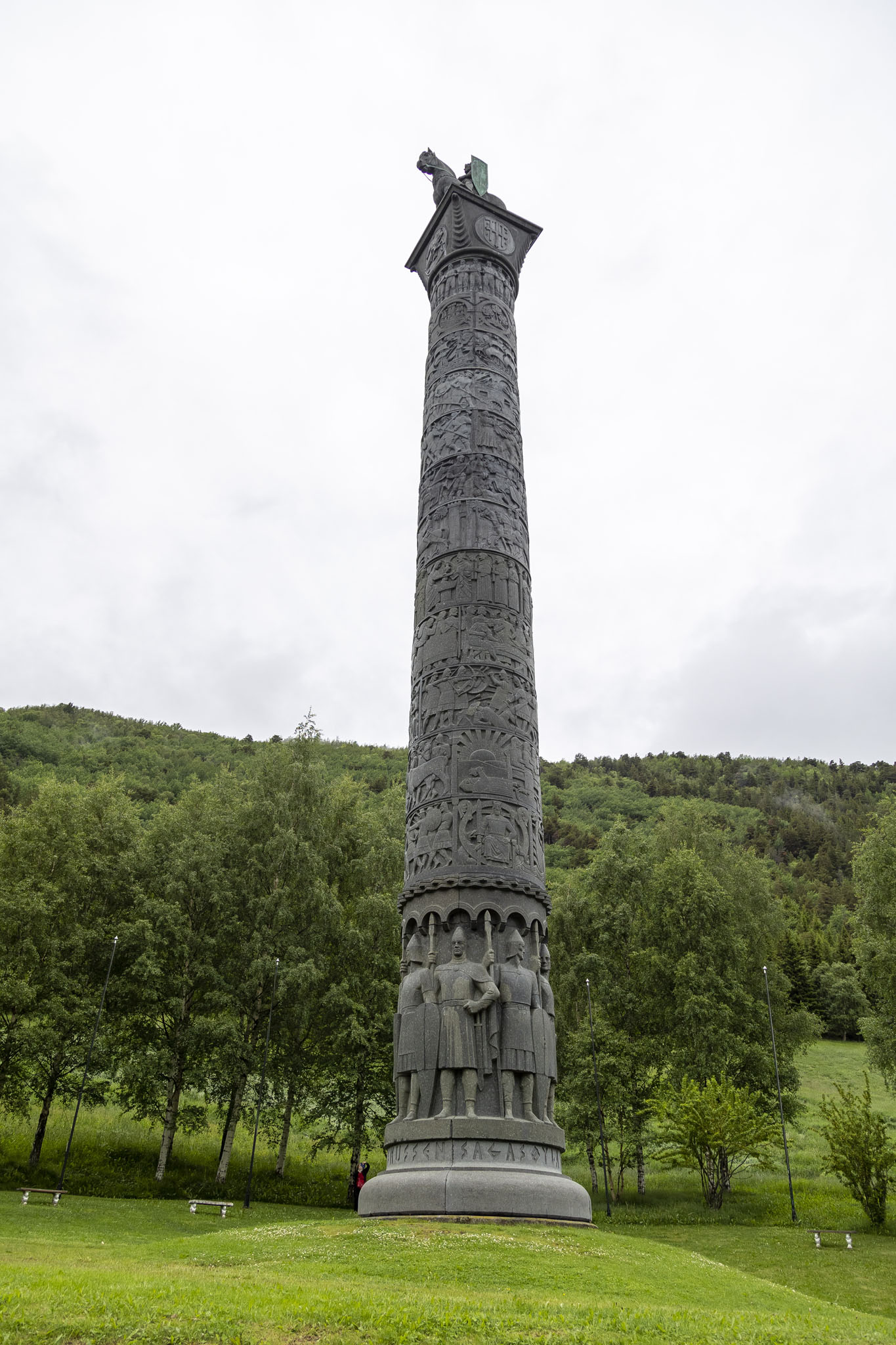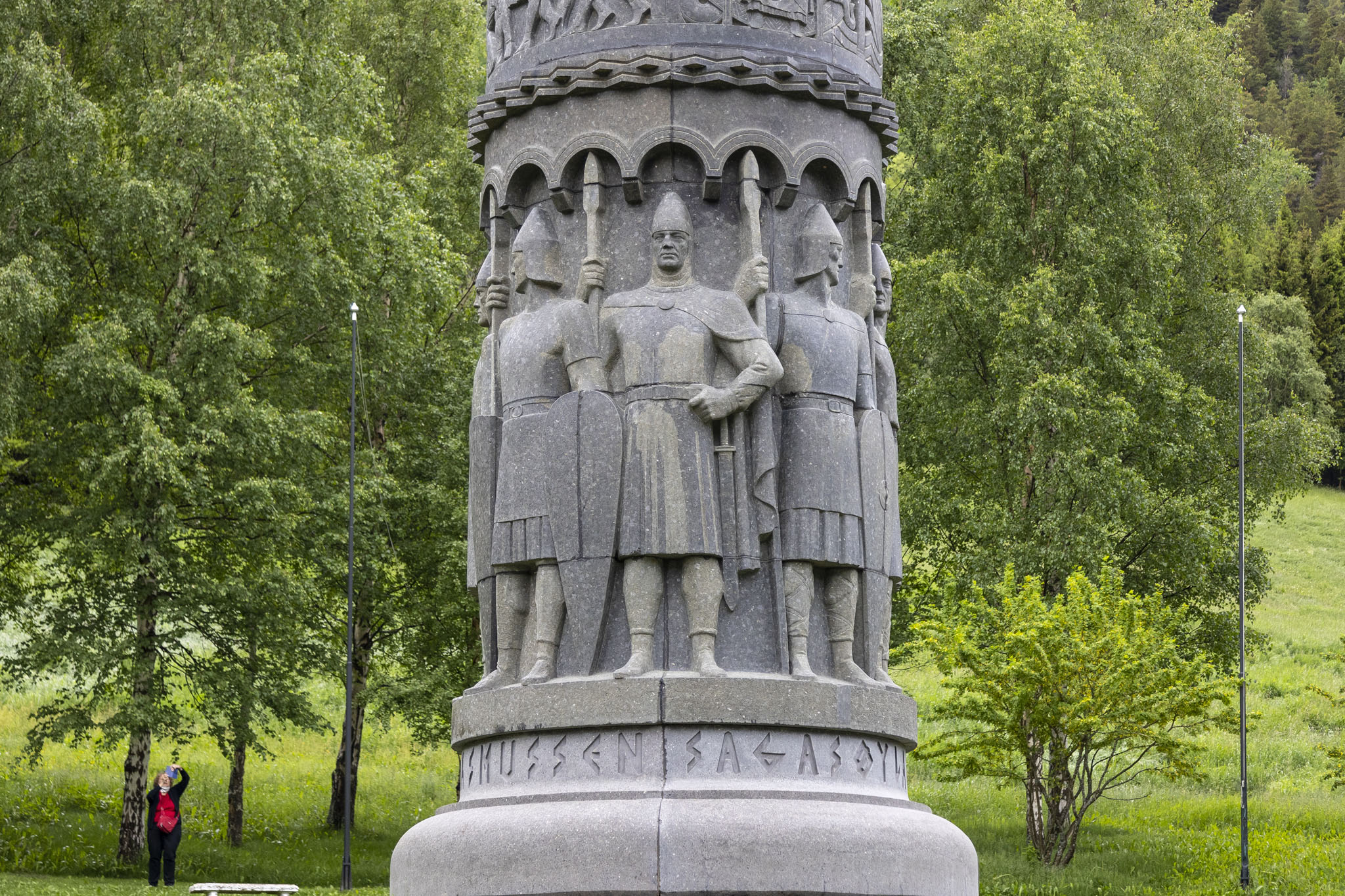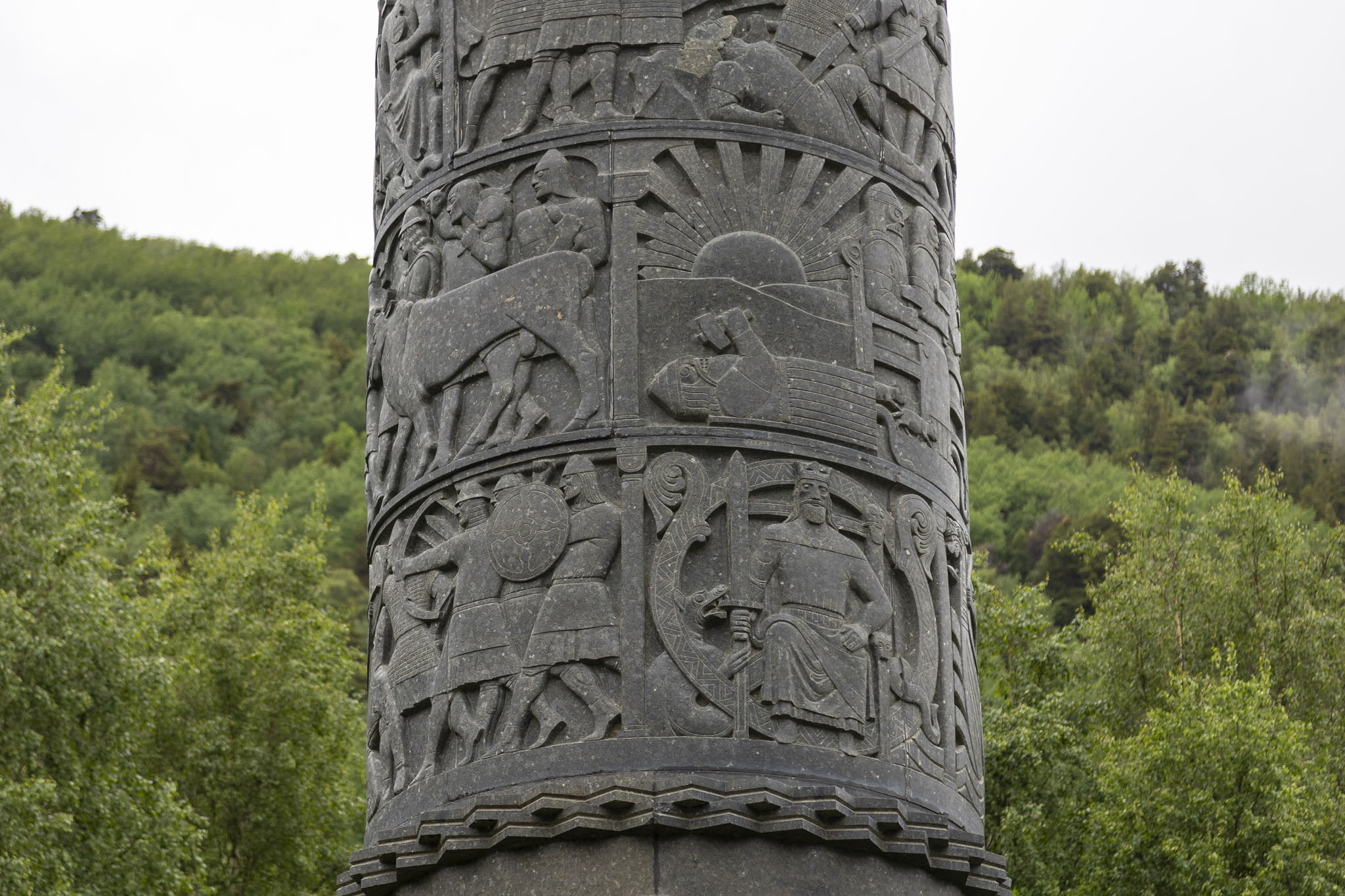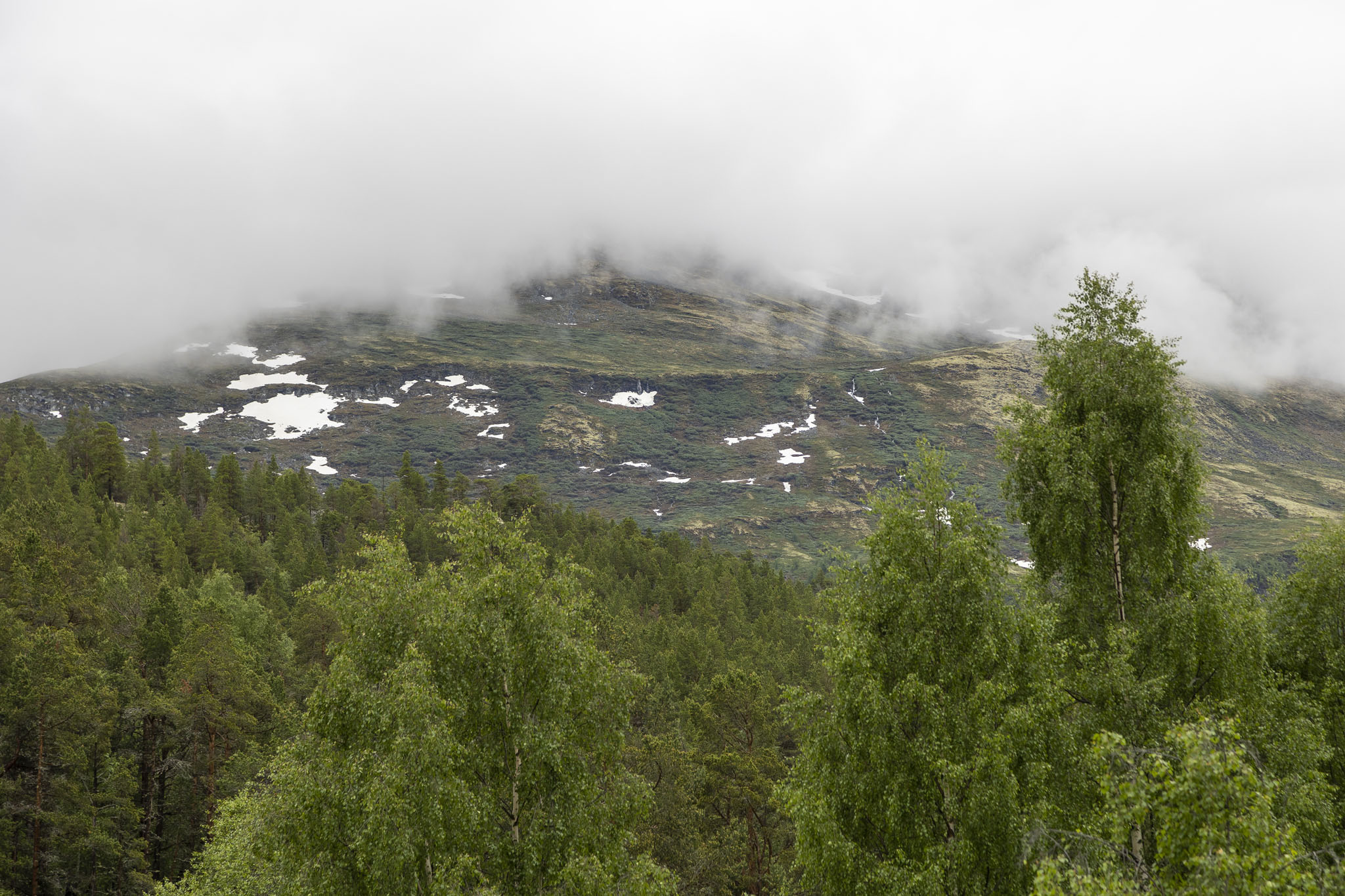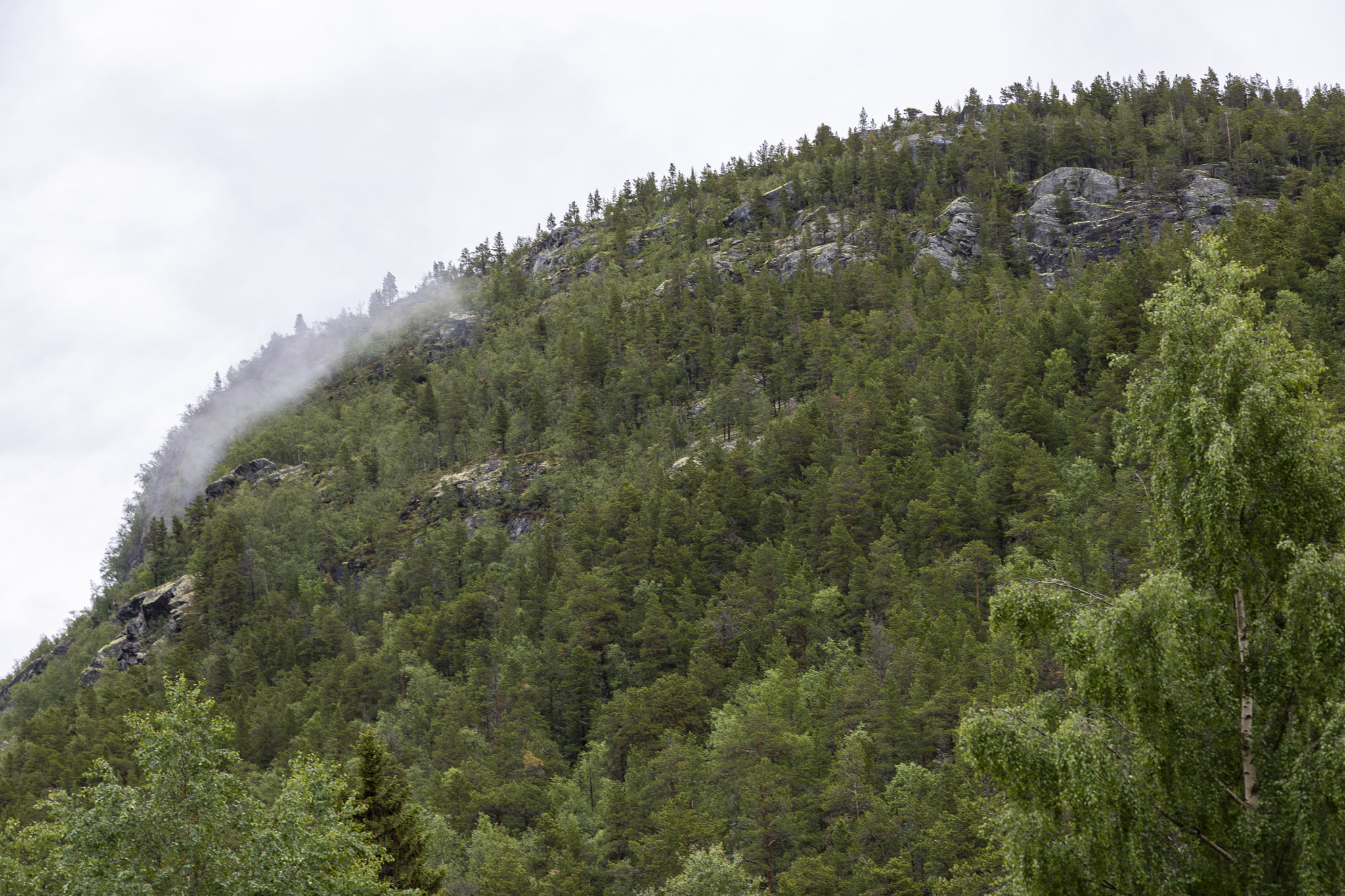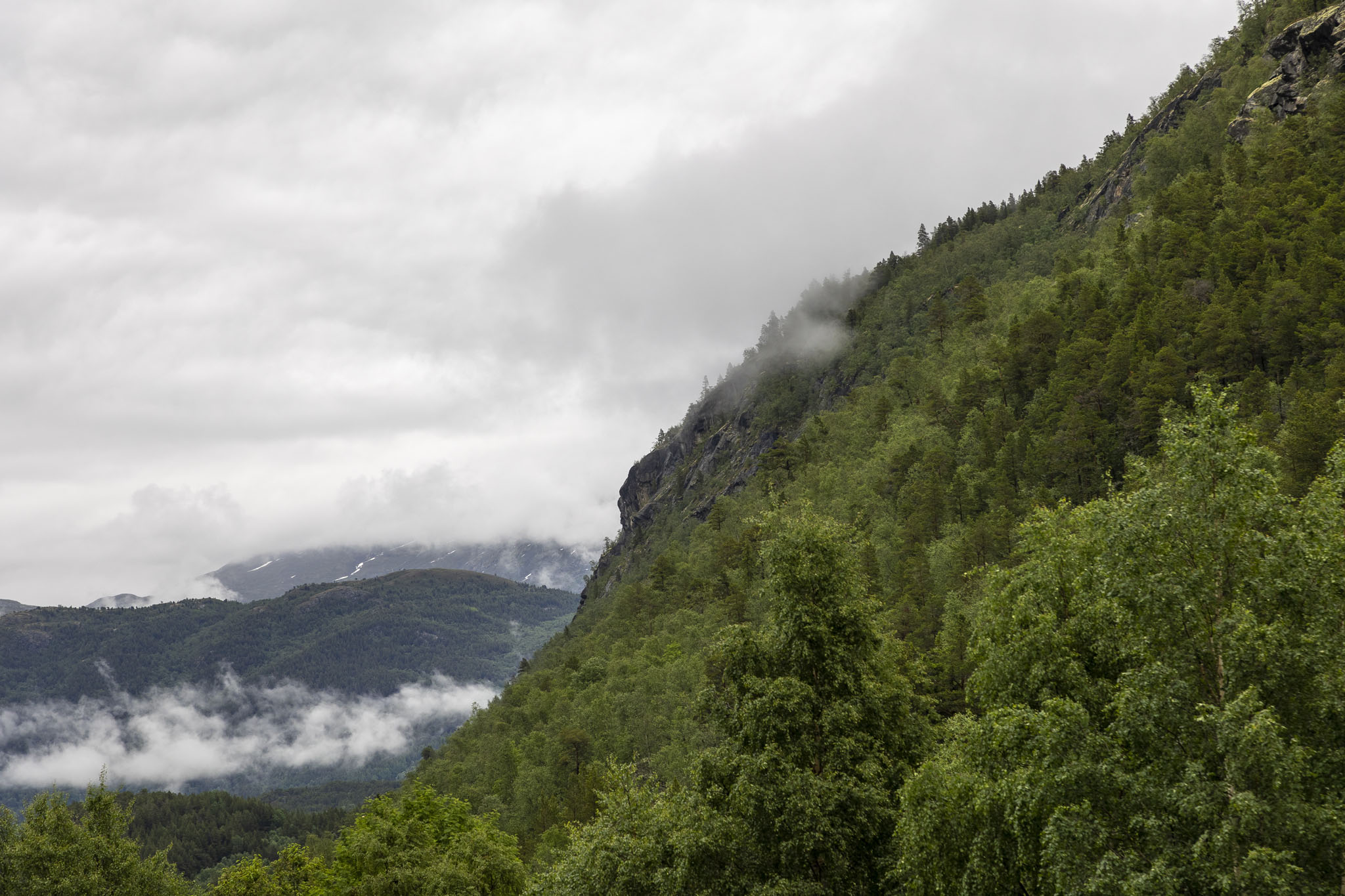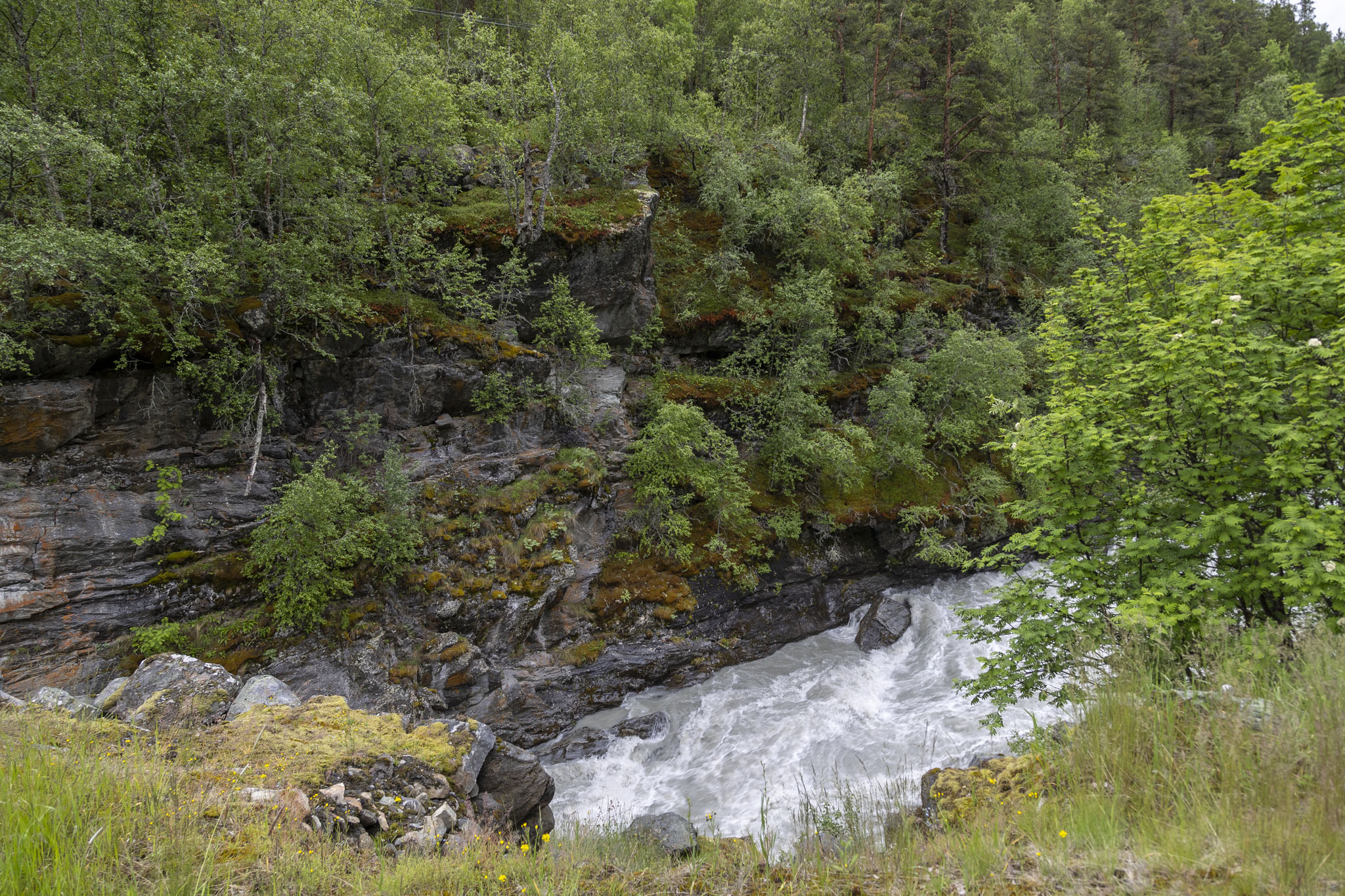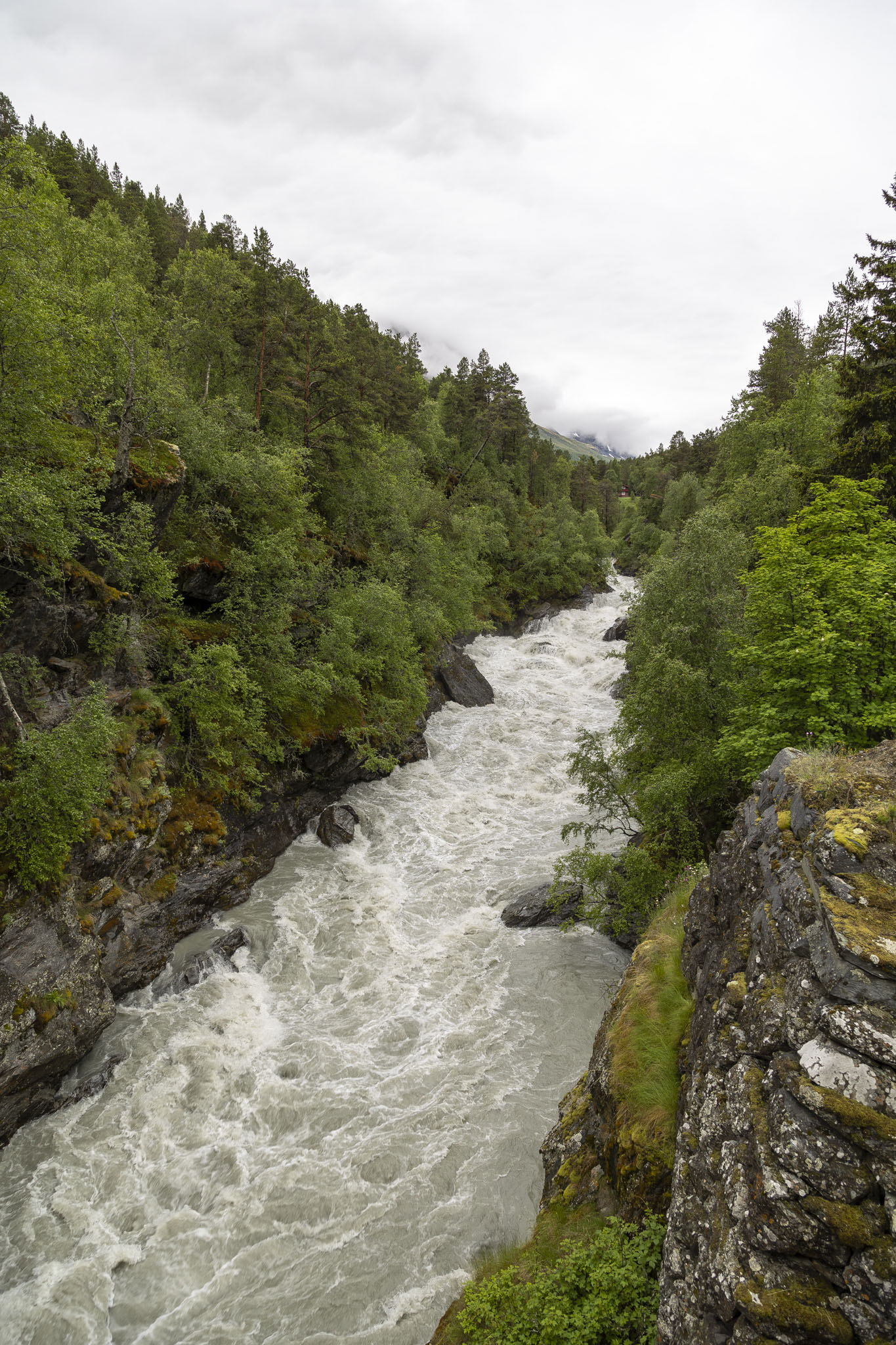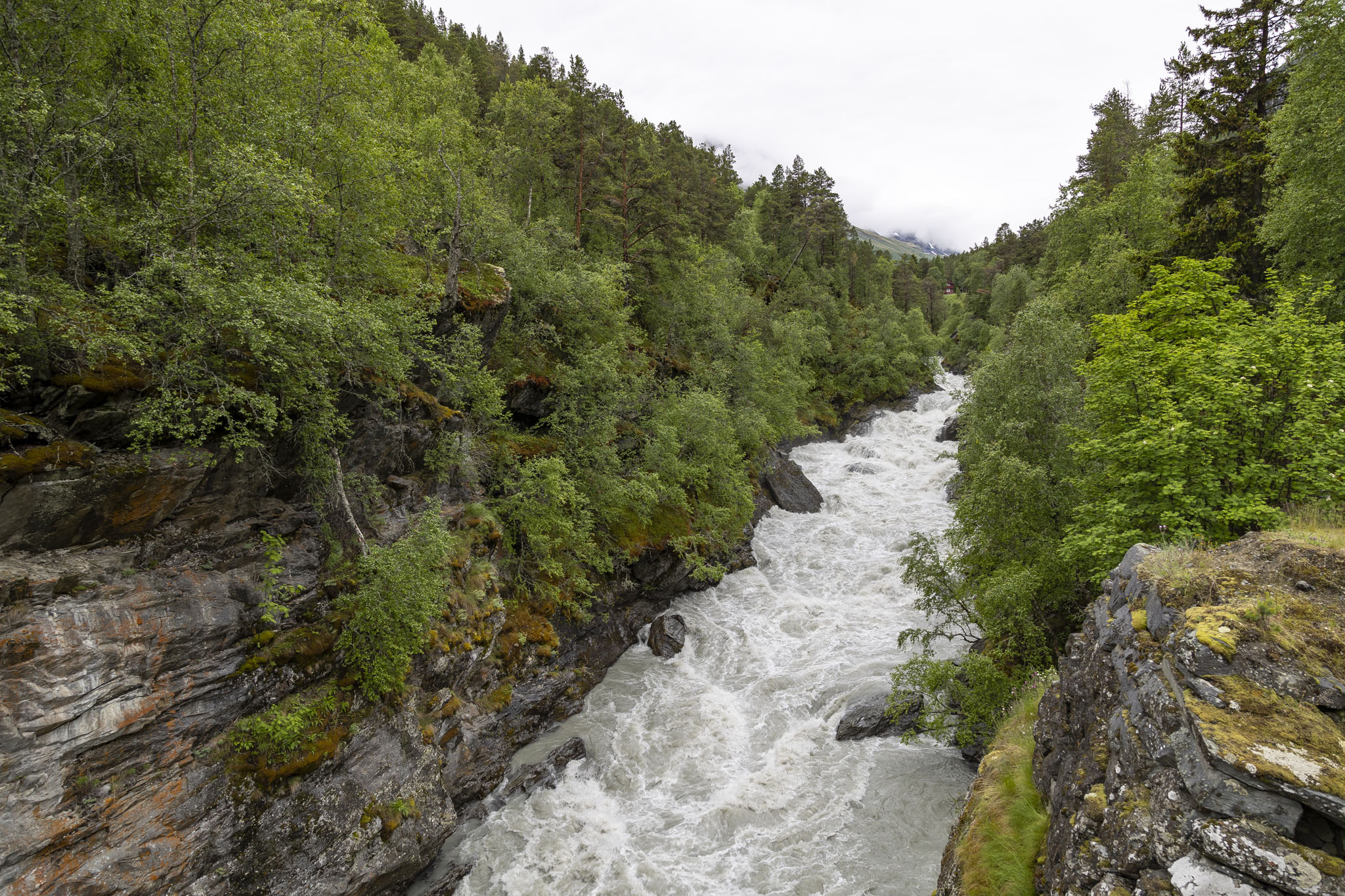To start this write-up covering the bulk of the day’s cruise excursion from Skjolden, and following on from our drive to and brief visit at the Mefjell Crossing Memorial Stones, and it’s not something I often do, here are some photos shot from the window of the bus. I’m not a fan of photos through windows because windows are dirty, windows are often tinted these days, windows have a tendency to reflect what’s behind you, and buses have a tendency to be moving a lot; all this amounts to quite likely terrible photographs. Not as terrible as those people holding up phones with flashes on them in buses, though. I mean, I dread to think what those pictures look like.
“Okay, so behind that glare is this amazing waterfall. Truly jaw-droppingly beautiful!”
“Ooh! Sounds great. And what about this one?”
“Oh, yes, I can tell from the brightly illuminated back of the seat and bit of the curtain here that the flash against the window pane is obscuring a chasm beside the road through which a thundering river flowed.”
“Wow! I’d have loved to have seen that!”
“What are you implying, Ethel?”
To these photos then: they are, pretty much as you see, a few samples of the Norwegian landscape in this part of the world. I suspect I was trying to grab interesting shots of the low cloud putting out feelers through the mountains and around the tree-tops. Not with a lot of success it must be said.
The village we ended up in was Fossbergom and it was Lom’s administrative centre. While the focus of this trip would be to the church and to have some lunch, we started with a short visit to the Norsk Fjellsenter, home of the largest collection of archaeological finds discovered under retreating glacial ice. In fact, more than half of all finds in the world from retreating glaciers have been found in the mountains around Lom. The glacier archaeology centre was okay, and if you’ve a keen interest in seeing human life covered by ice then exposed in a warming climate it’s going to interest you, but I wasn’t blown away by the place. Part of that may have been the necessarily short time we had there; if we’d had a little more free time then it might have been different, and there are a couple of other museums nearby that would be interesting to us so I’d certainly not be averse to returning here at some point.
Here’s a little lesson in Norwegian for you, and this is just what I’ve picked up from having Norwegian friends and using multilingual social media platforms like Mastodon: foss means waterfall (you see that in Iceland a lot too with the names of their waterfalls, Gullfoss and Seljalandsfoss, etc.); berg means mountain. Fossbergom, as I’m sure you can now guess, has got some mountains and waterfalls near it. It also had an absolutely thundering river passing through – the Bovra – that I had to gawk at before our next stop on this excursion.
We gathered outside the Lom Stave Church and waited for our guide to arrive and lead us inside.
Lom Stave Church dates from the twelfth century, making it one of the oldest churches of its type in Norway. If you’ve read many (or any) of our other travelogue posts then excuse me while I sit down for a moment, I’m feeling a bit faint. Okay, now that I’ve got over that shock, then if you have read some other content, particularly any write-ups from our many trips to Norway now, then you’ll know that we like a nice stave church, and Lom made the third we’d seen after Borgund and Gol. Lom was definitely the largest and it was light and spacious inside too which made taking photos a lot easier for once. The church’s interior was not twelfth century but you could tell that just from looking. “Looks closer to eighteenth century to me,” I hear you think, and I think you’re right.
After a little bit of a chat about some of the church’s history and the pointing out of some of the architectural elements that make a stave church unique we were given a little bit of free time to explore, take photos, etc. and so I did, braving the very light drizzle because I’m tough and fearless.
Our last stop in Fossbergom was a short walk away that we nevertheless were bundled into the bus for. The Fossheim Hotel provided us with a lunch of salmon, vegetables, and potatoes, followed by cream and berries. I’m not a fan of berries and my wife’s not a fan of new potatoes so we both swapped some of our food around and it was all perfectly acceptable fare.
This marked the point in the day’s cruise excursion where we turned around and started to head back towards the ship, but we had a few stops to make on the way. The first of these stops was to see the Saga Column.
The 34-metre high Saga Column only dates from 1992, but its design is a bit older, and the monument’s location is interesting in that it’s not particularly significant. For the reasons behind all this we need to take a look at the sculptor, Wilhelm Rasmussen. We’d already seen some absolutely incredible Norweigan sculptures on the cruise before this one when we’d visited Oslo and taken a look at Vigeland Park (and you should too). The sculptor in that case has had charges of Nazi leanings levelled against him but without any justification. That, however, isn’t the case for Rasmussen. Rasmussen was a member of the fascist political group Nasjonal Samling (NS) that collaborated with the Germans during World War II, and he was an active member too. He had won a prize in the 1920s to design a monument to be erected in Oslo but it wasn’t completed before the war started and with NS being banned and his career justifiably ruined afterwards the decision was made not to complete it. However, a change of heart in the latter part of the century due to the column’s very Norwegian themes led to it finally being constructed in its present location.
From the bottom to the top, the imagery on the Saga Column is:
- The Battle of Hafrsfjord
- Dale-Gudbrand’s meeting with St Olav
- The Battle of Stiklestad
- The construction of Nidaros Cathedral
- St Olav, St Swithun, St Hallvard, and St Sunniva
- Sigurd Jorsalfare’s crusade to Jerusalem
- Battle of Kringen
- Norwegian mining and quarrying
- Battle of Dynekilen
- The seals of the bishoprics in the Middle Ages
- The Eidsvoll Men
- Harald Fairhair on horseback
Across the road from the Saga Column we could hear the nearby Leira River rushing through the canyon so had to head across for a few photos before it was time to leave.
In the next post in this cruise travelogue series we’ll complete our return to Skjolden by bus, including a stop to see a waterfall and a traffic jam caused by clouds.
